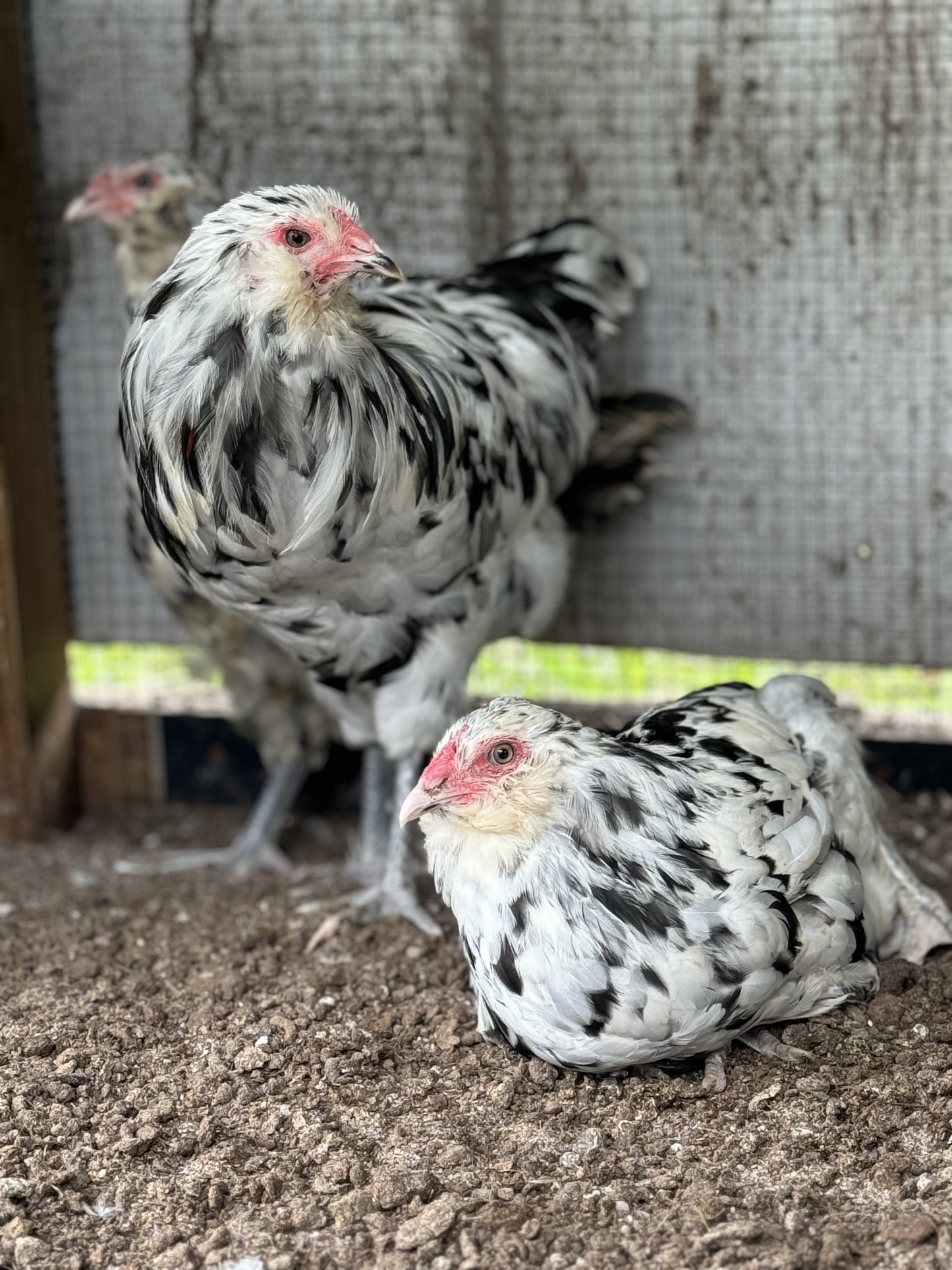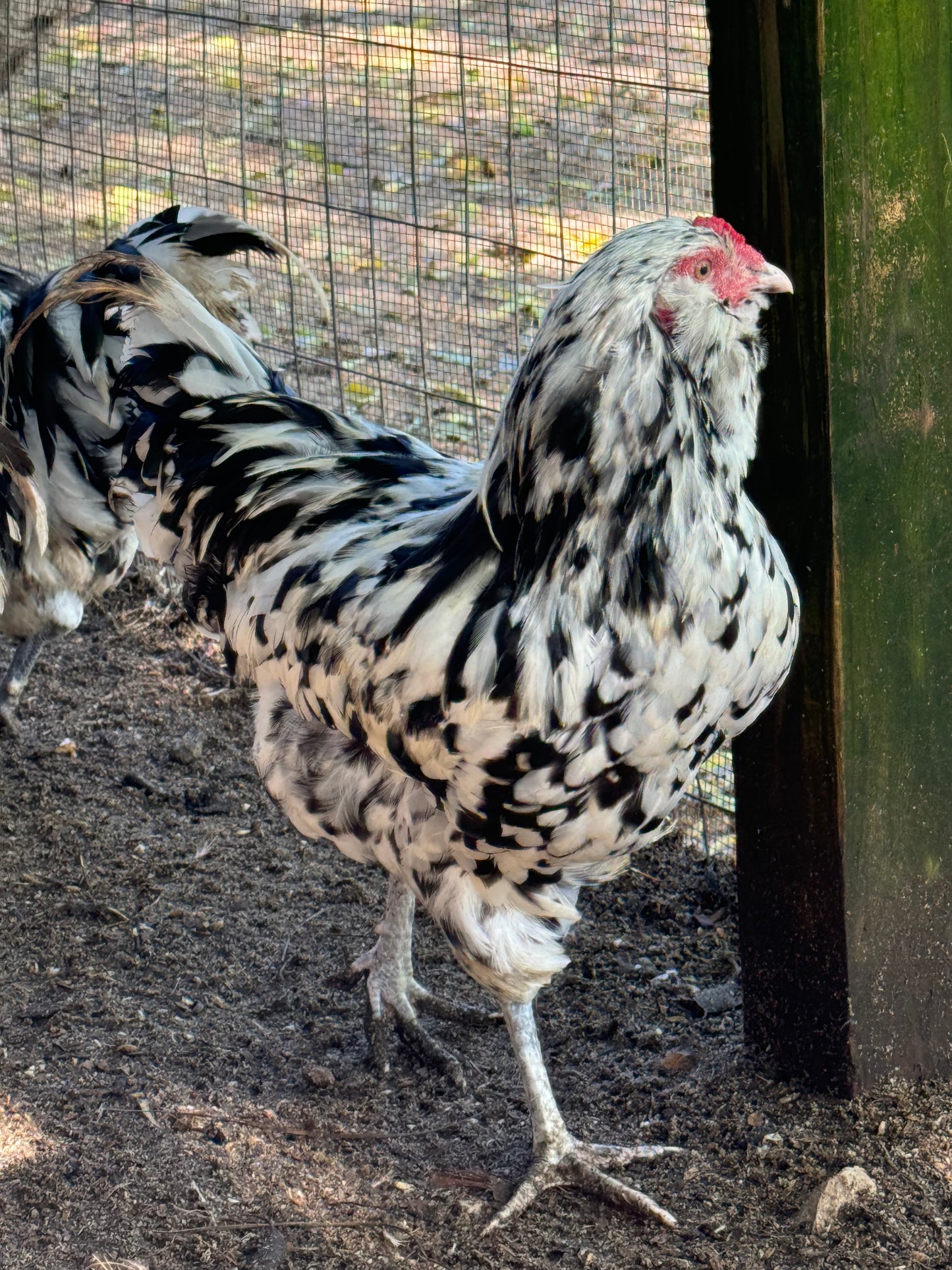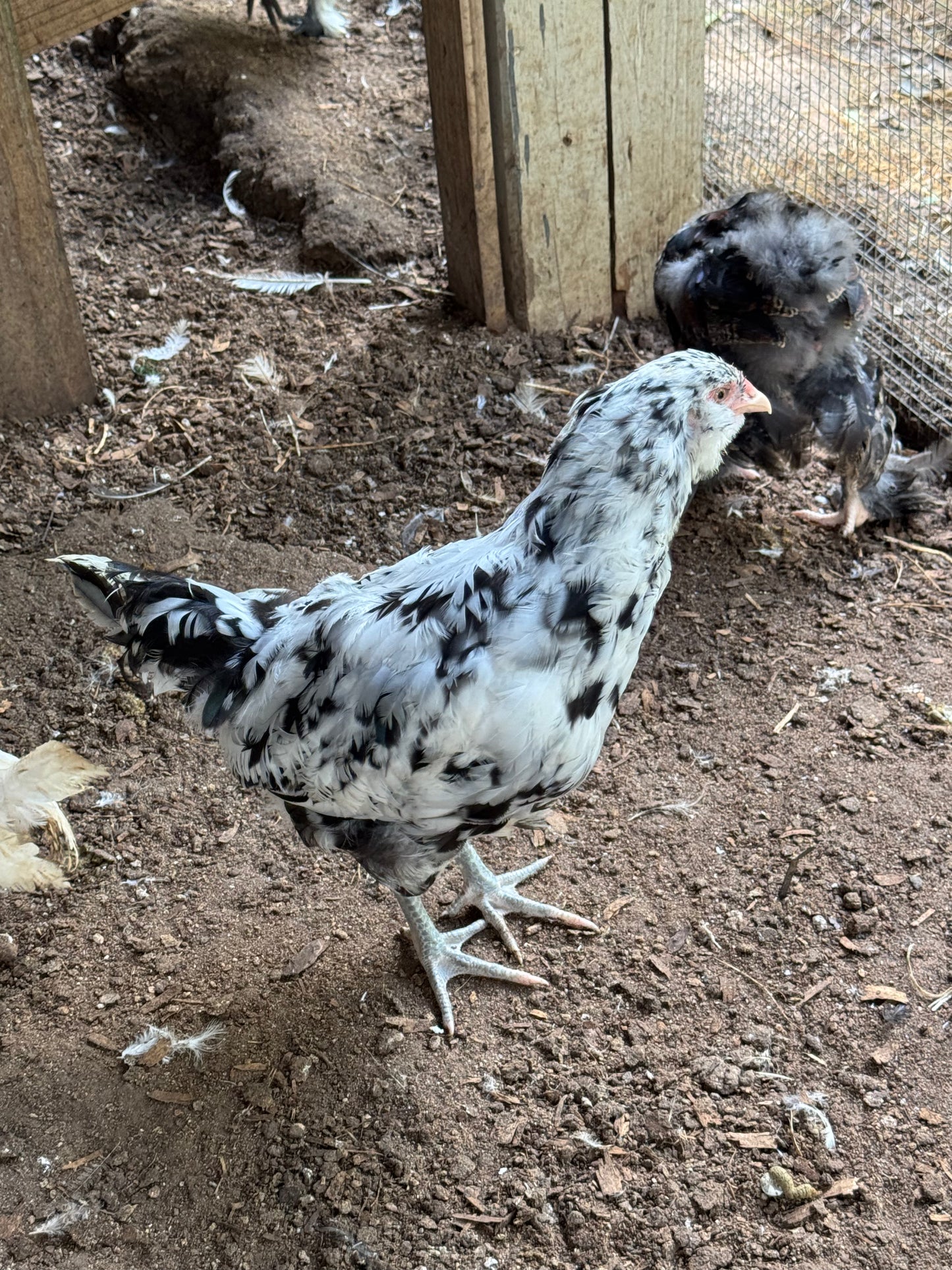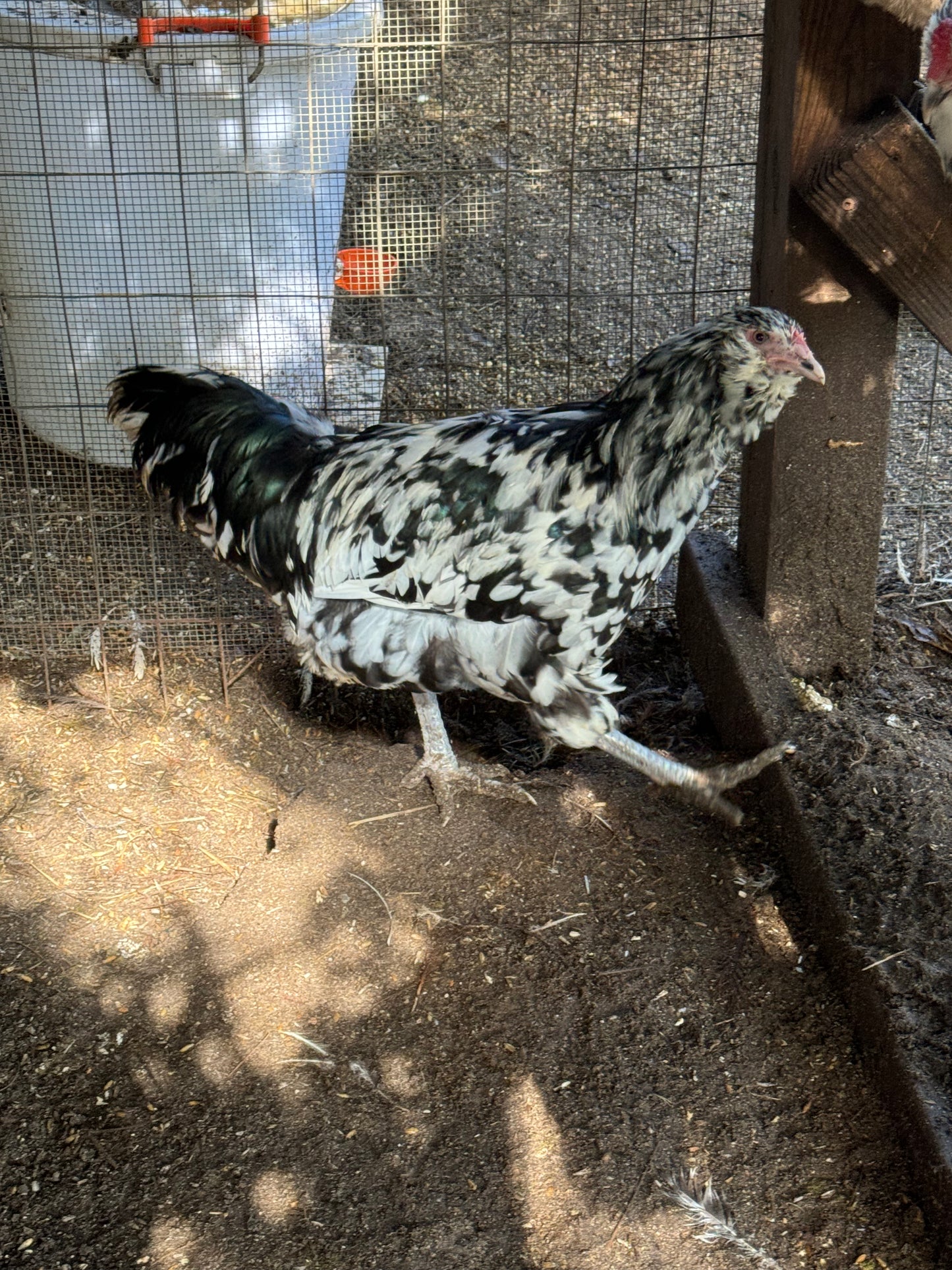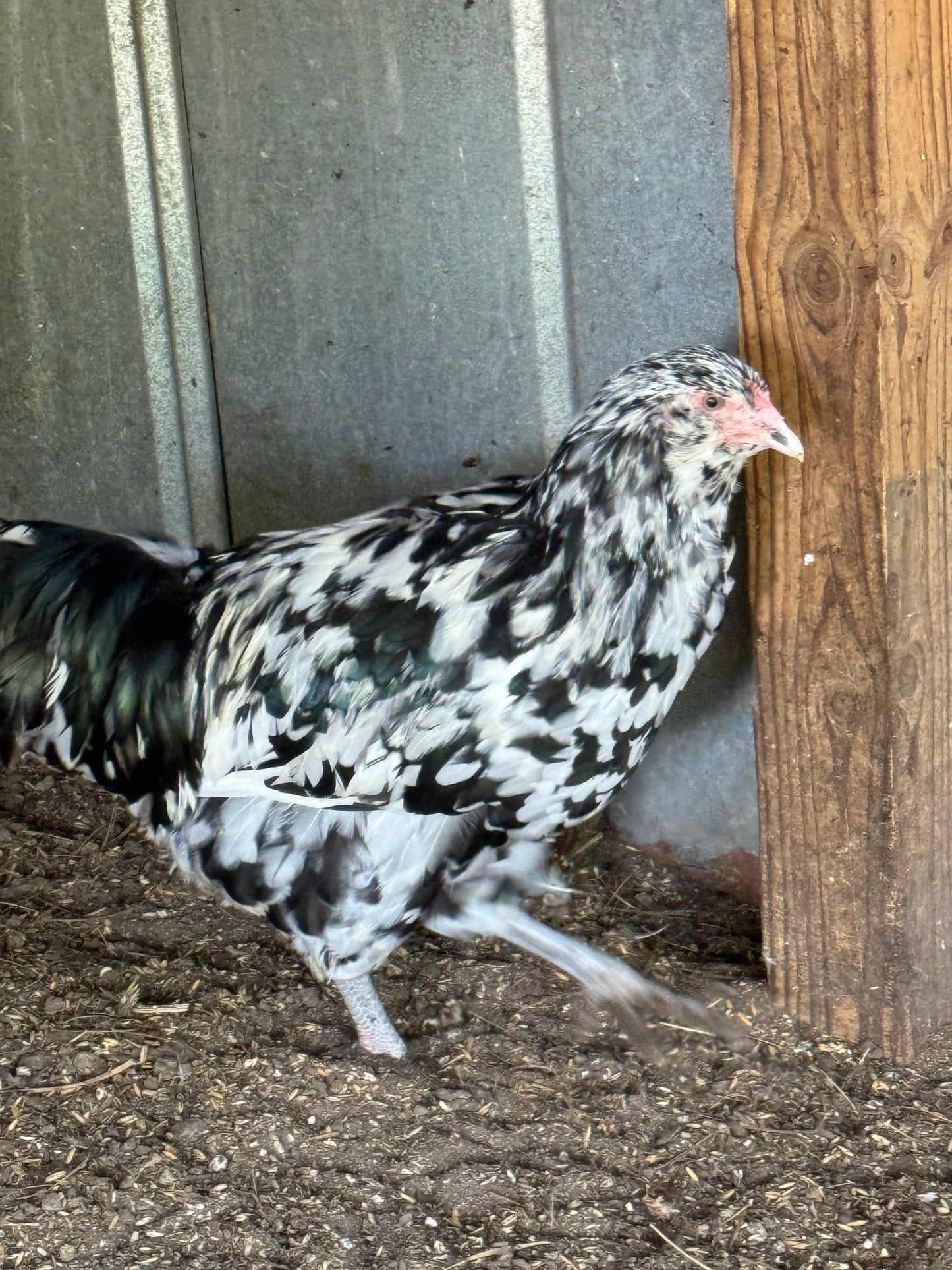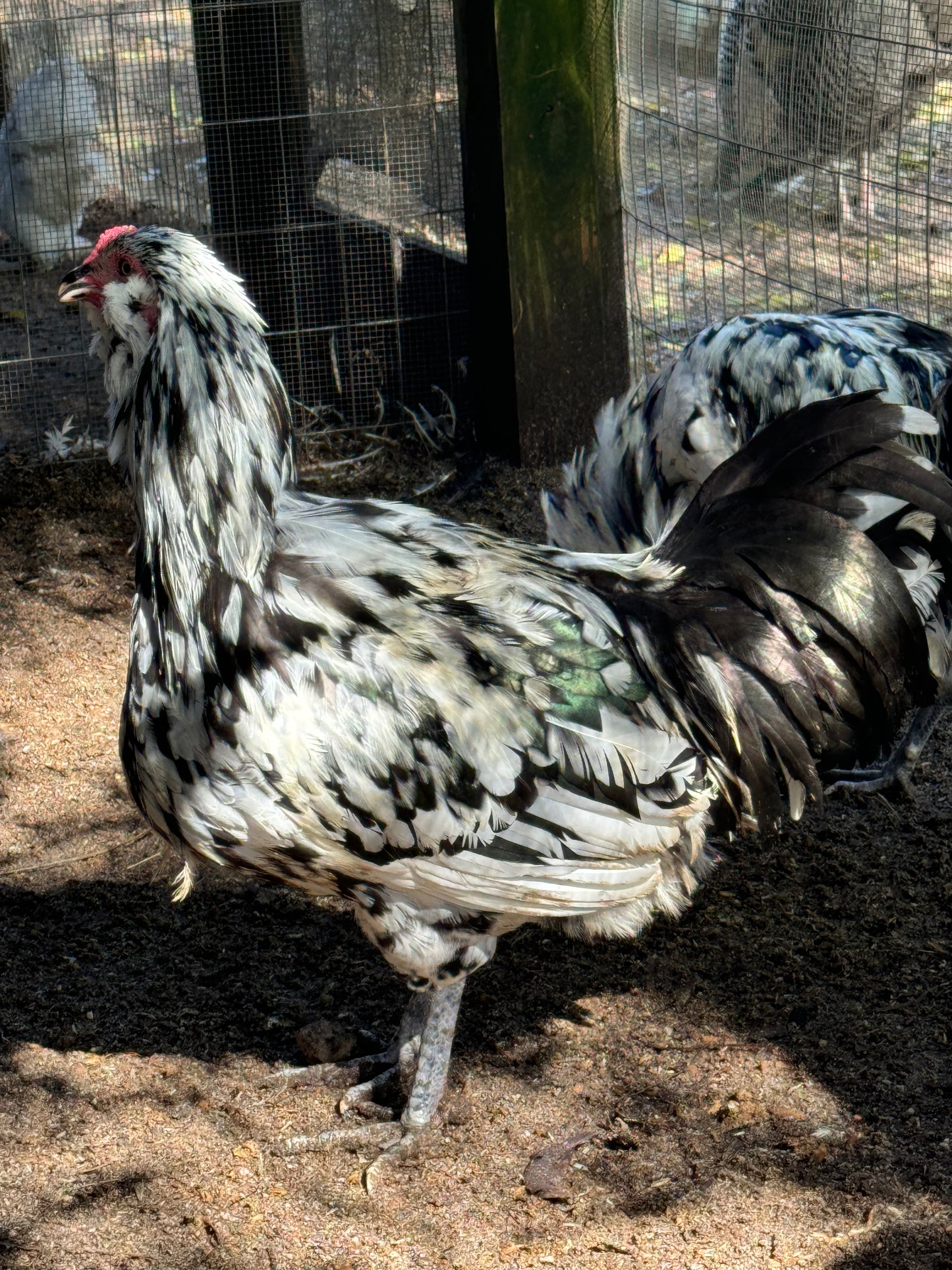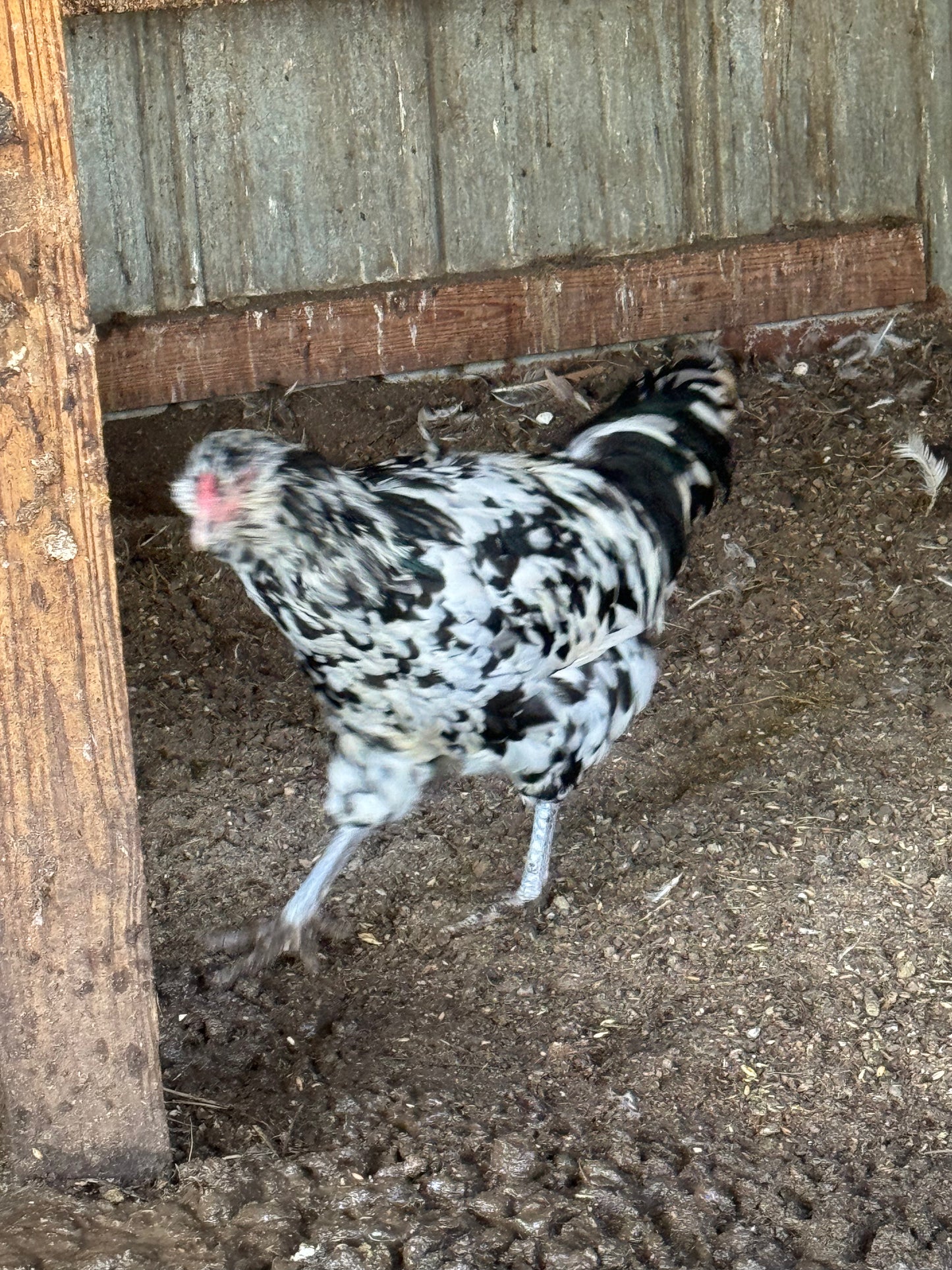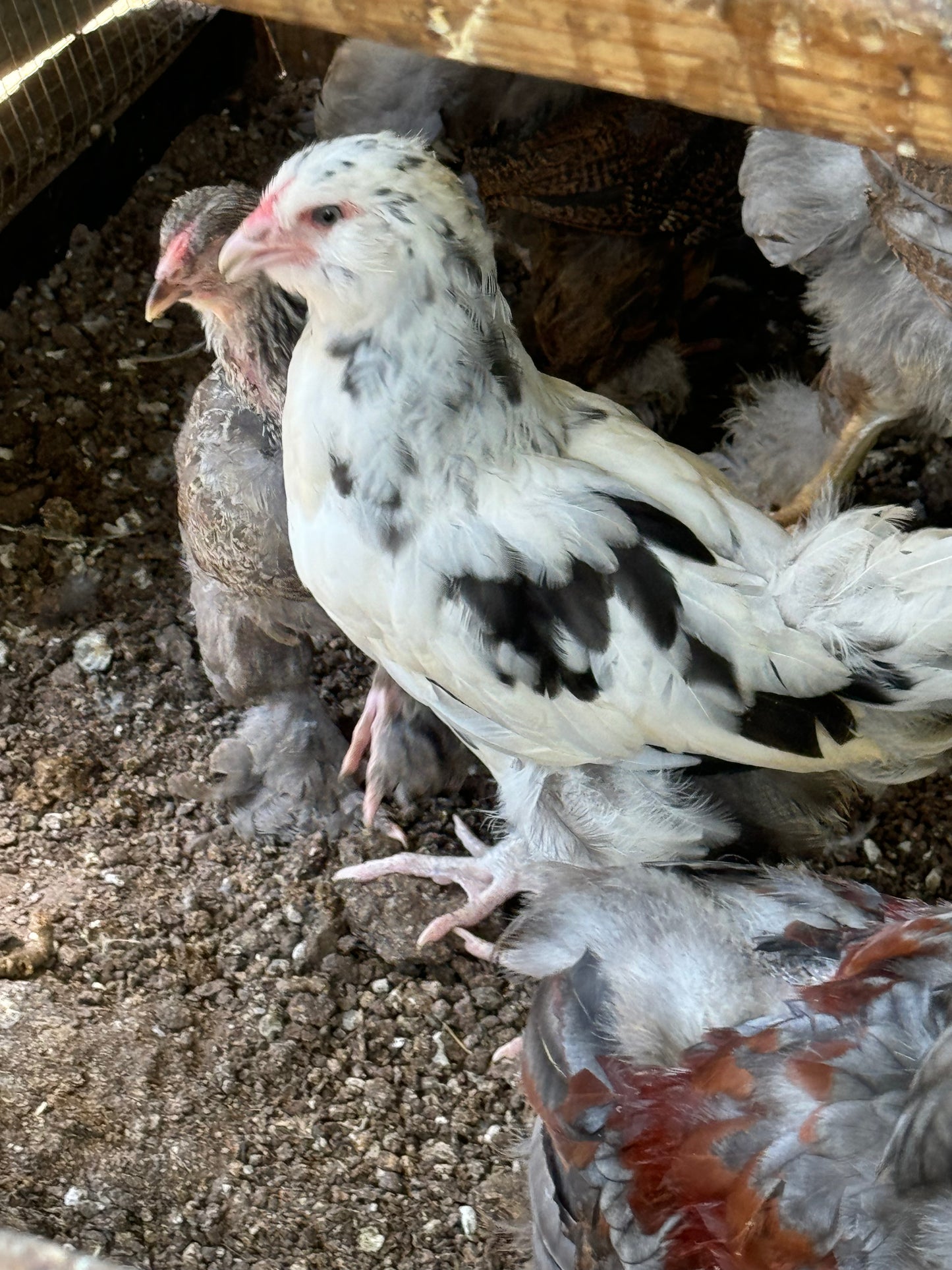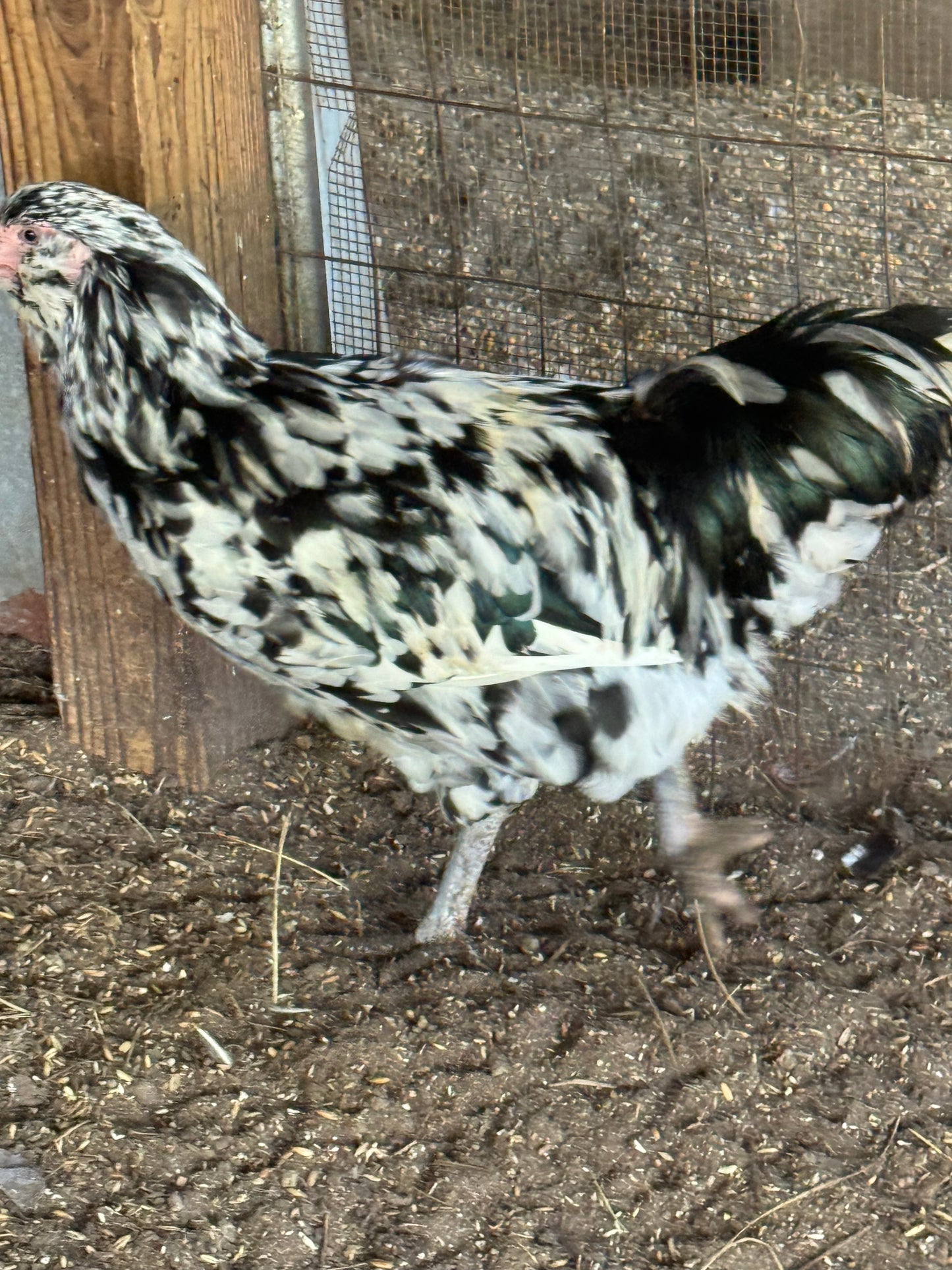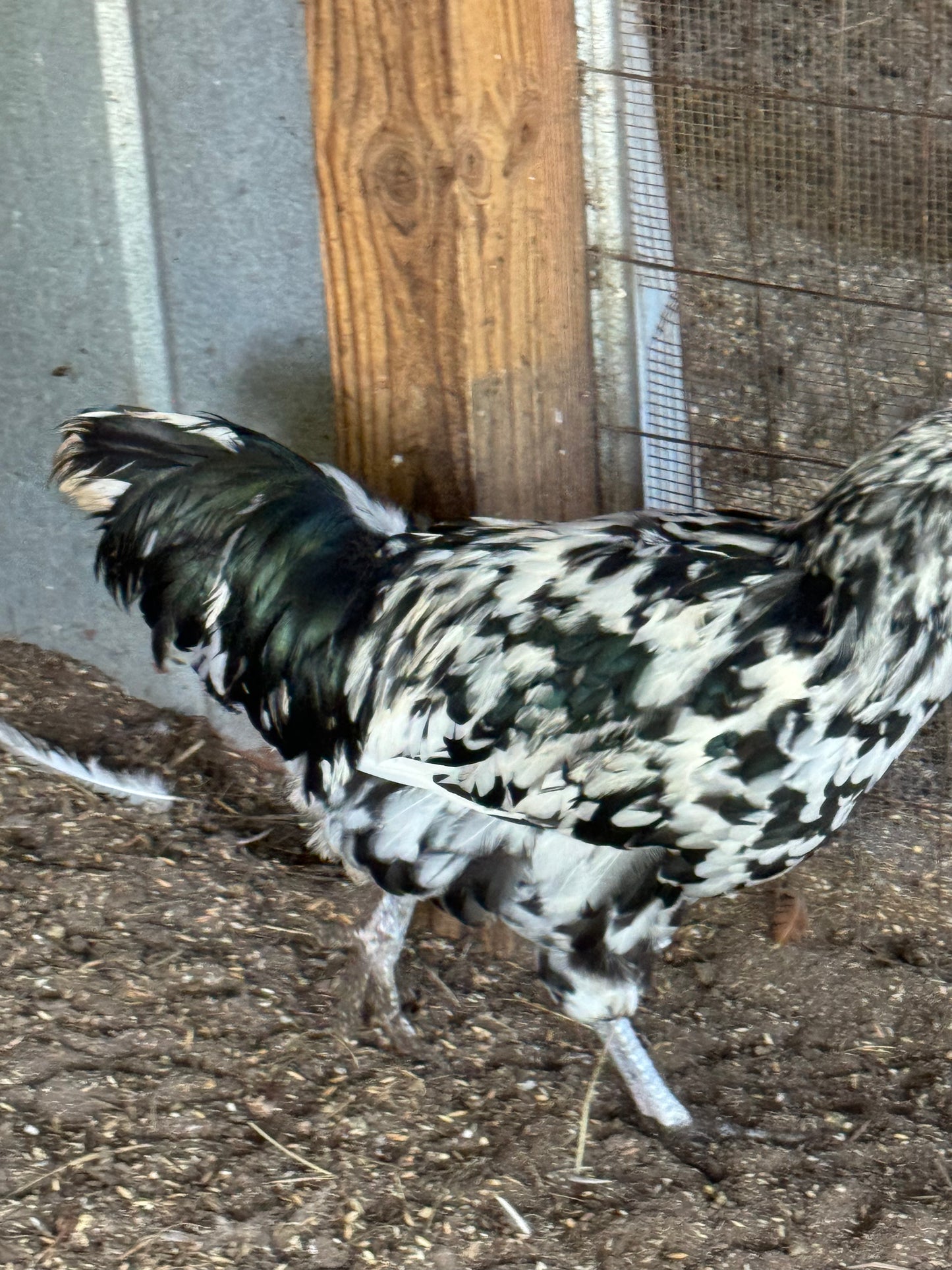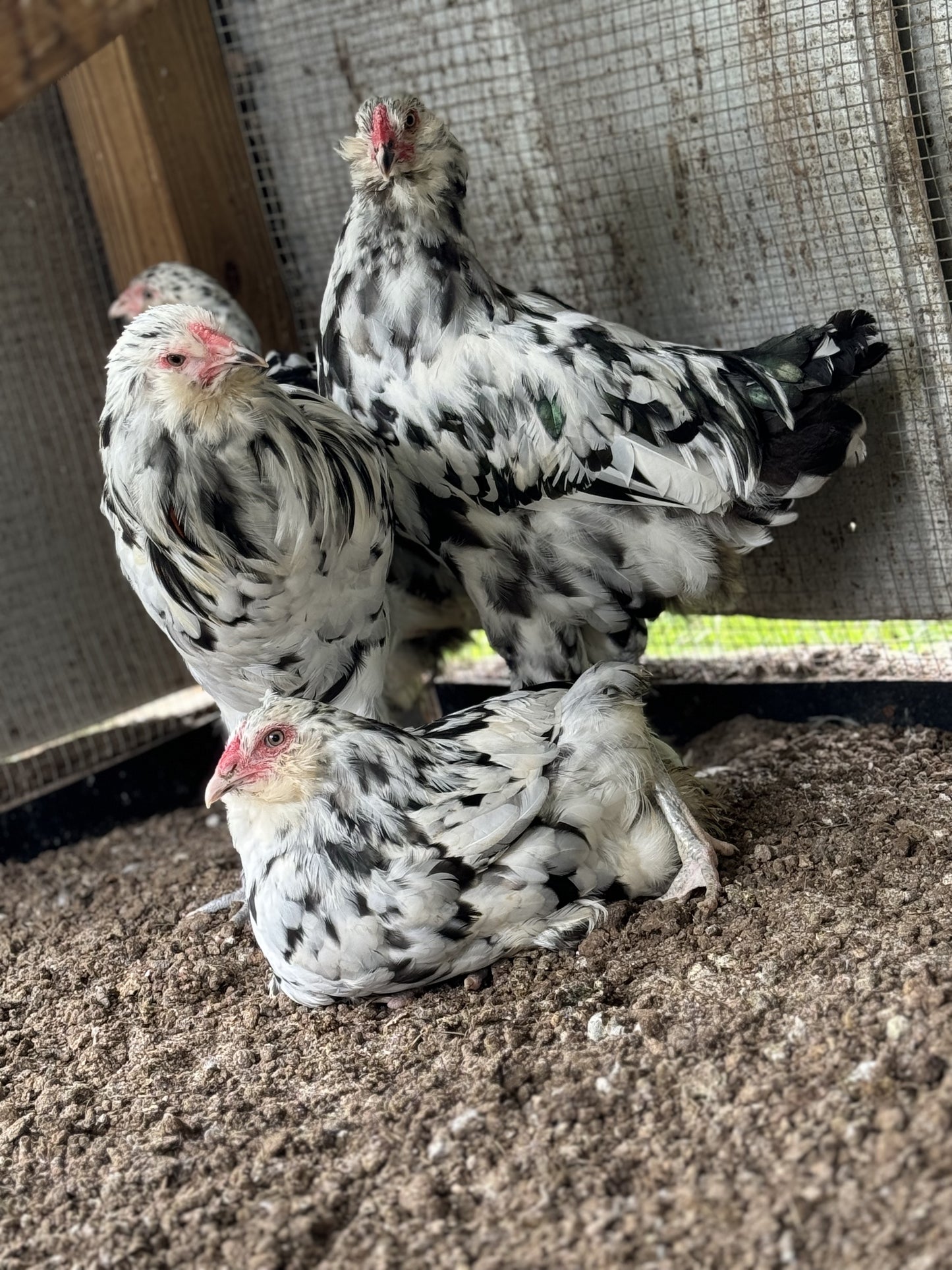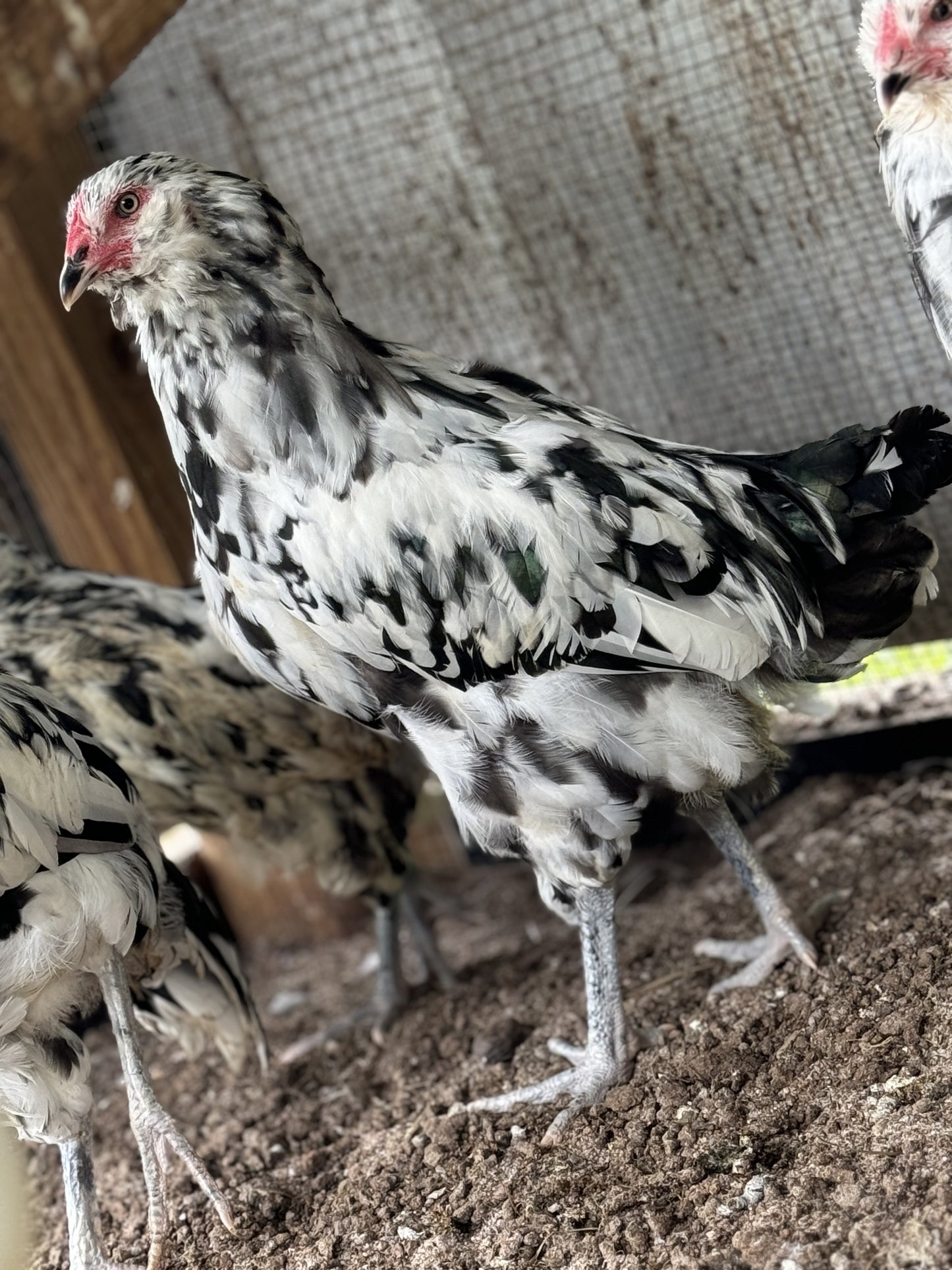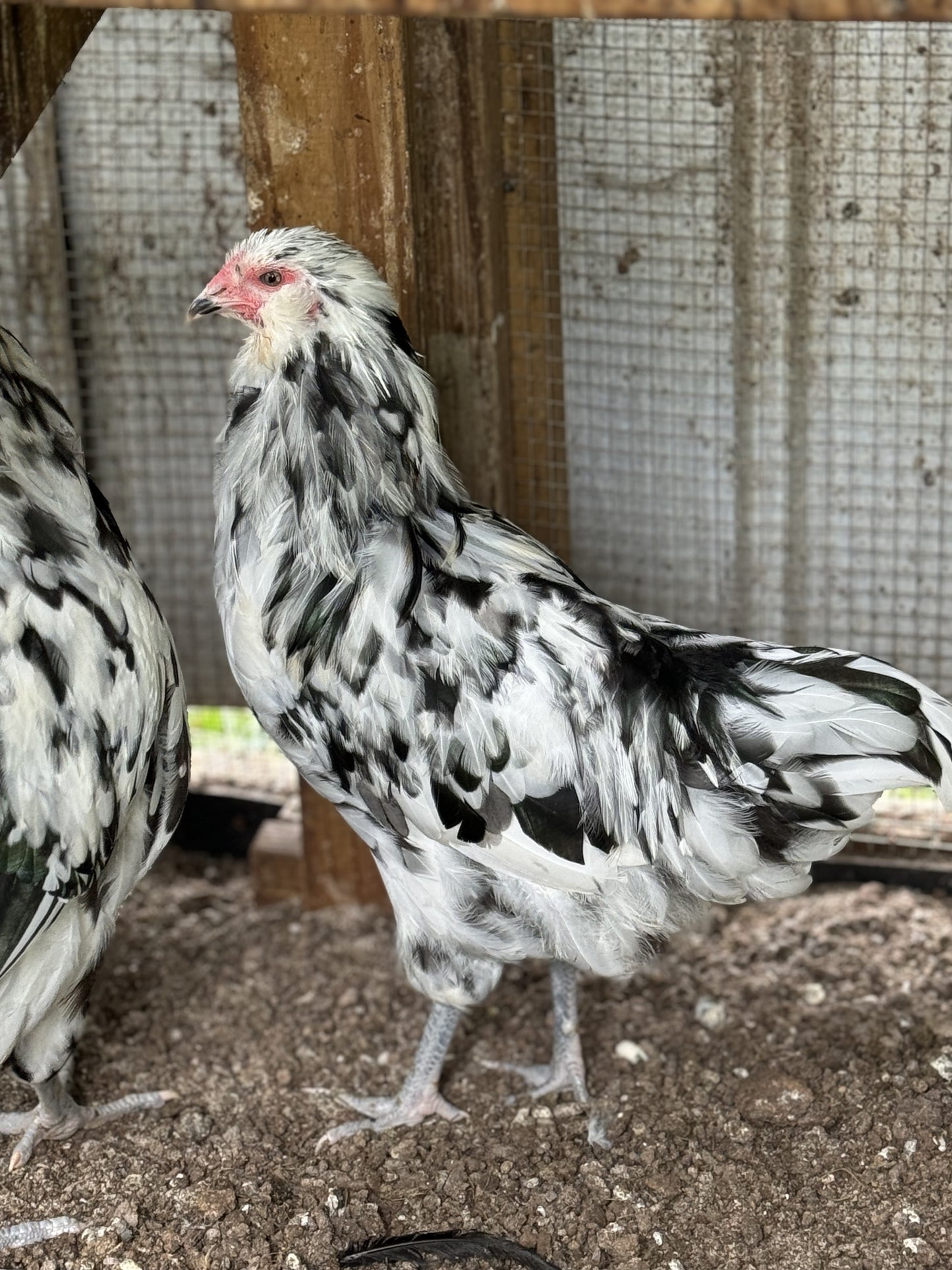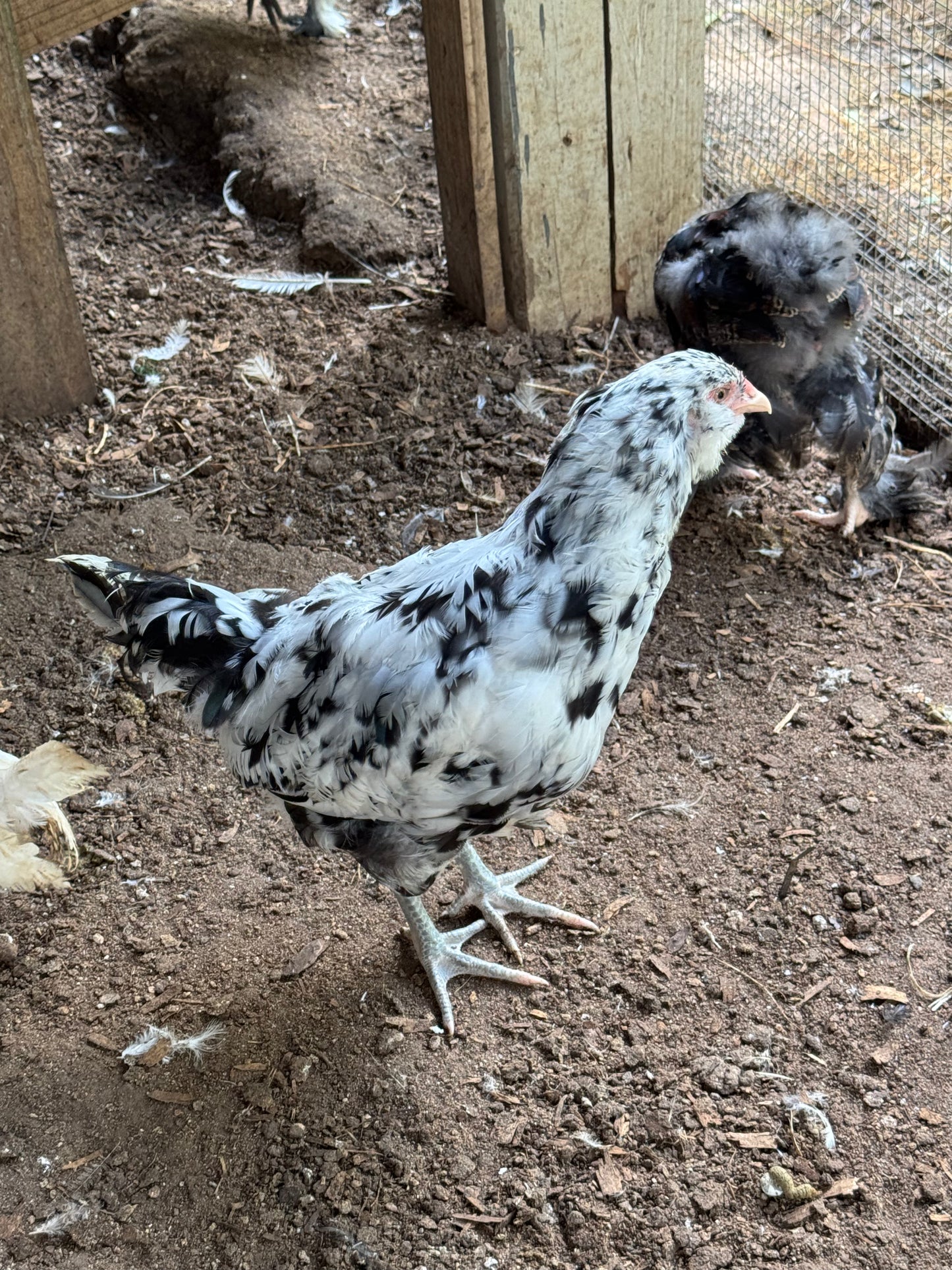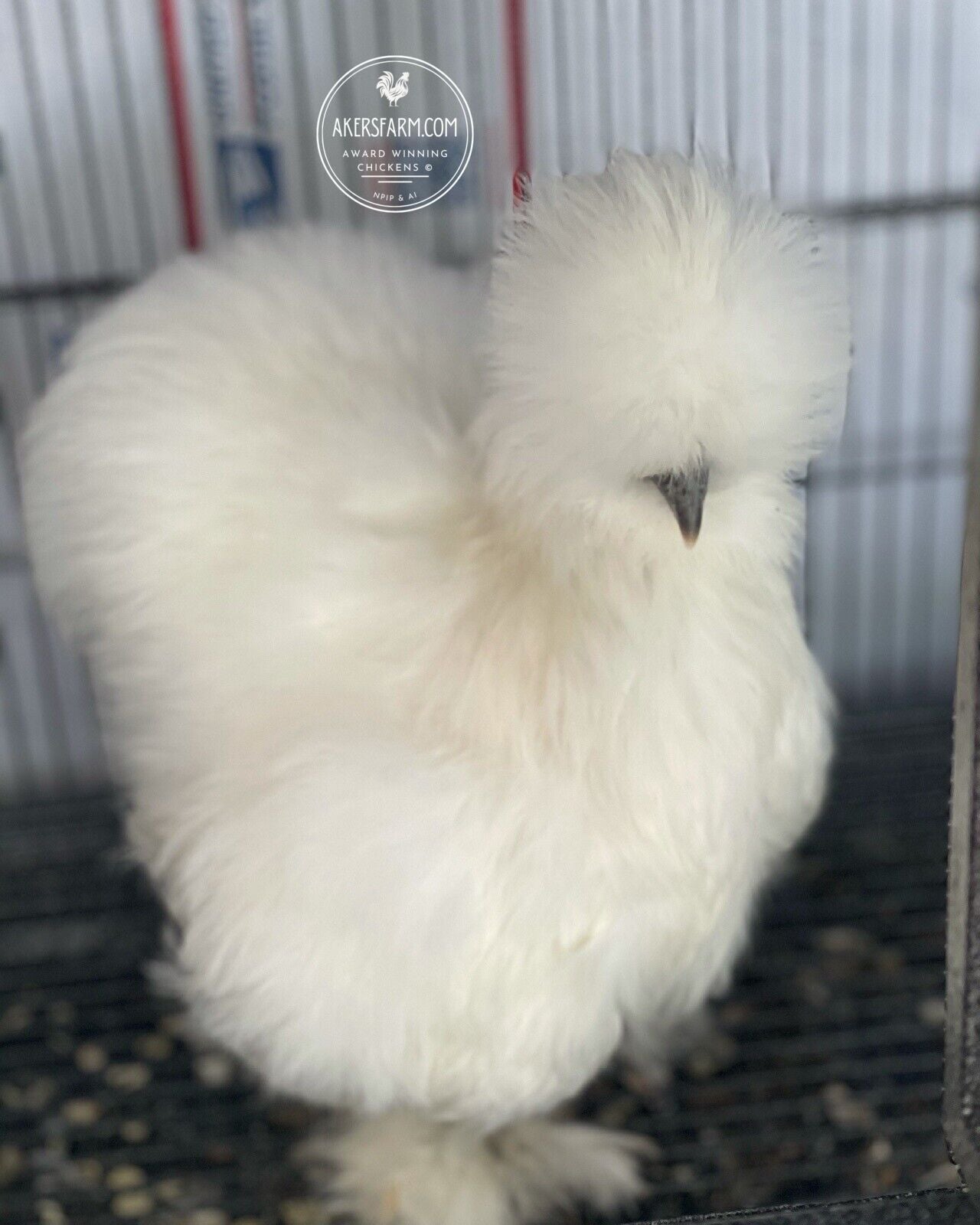Paint/Ermine Genetics
Paint chickens are black-and-white birds with a striking, spotted look — as if someone splashed white paint over a black chicken. This pattern is caused by the dominant white (I) gene, which only partially blocks black pigment instead of turning the bird completely white. The result is a random mix of black and white feathers that makes every paint chicken one-of-a-kind. This guide keeps it simple, explaining how the gene works, how it differs from recessive white (c/c), and what to watch for when working with this pattern.
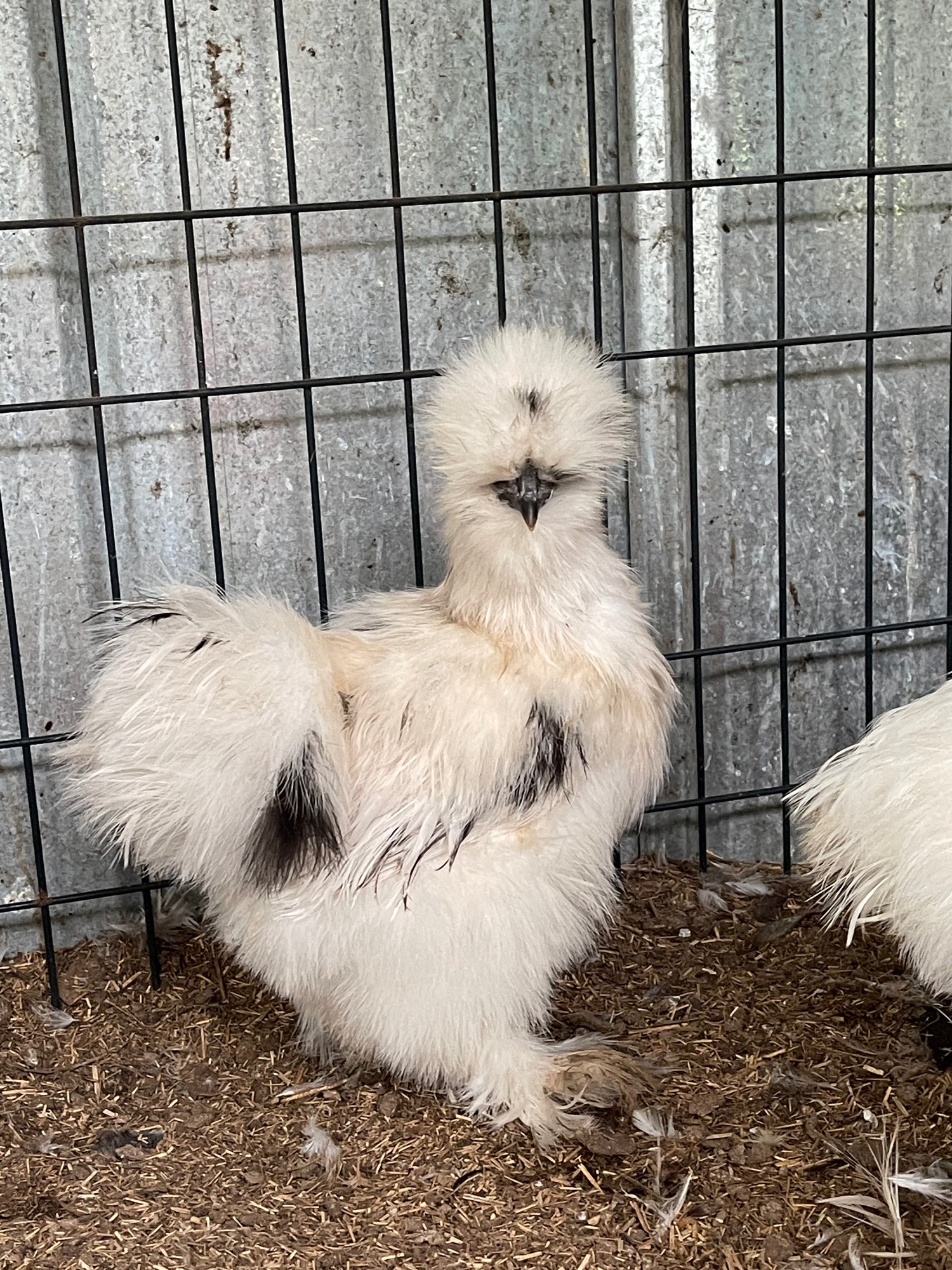
Let's Explore the genes that create the "Paint" phenotype
Paint is a slightly more complicated genetic combination because it involves TWO genes instead of only variations of a single gene like Silver/Gold and Blue/Black/Splash, but let's keep it simple. The paint coloration comes from the interaction between two genes — the black base (E) and dominant white (I). Paint birds are heterozygous (meaning they carry only one copy of the dominant white gene, I/i⁺), which partially blocks black pigment and creates the random white patches.
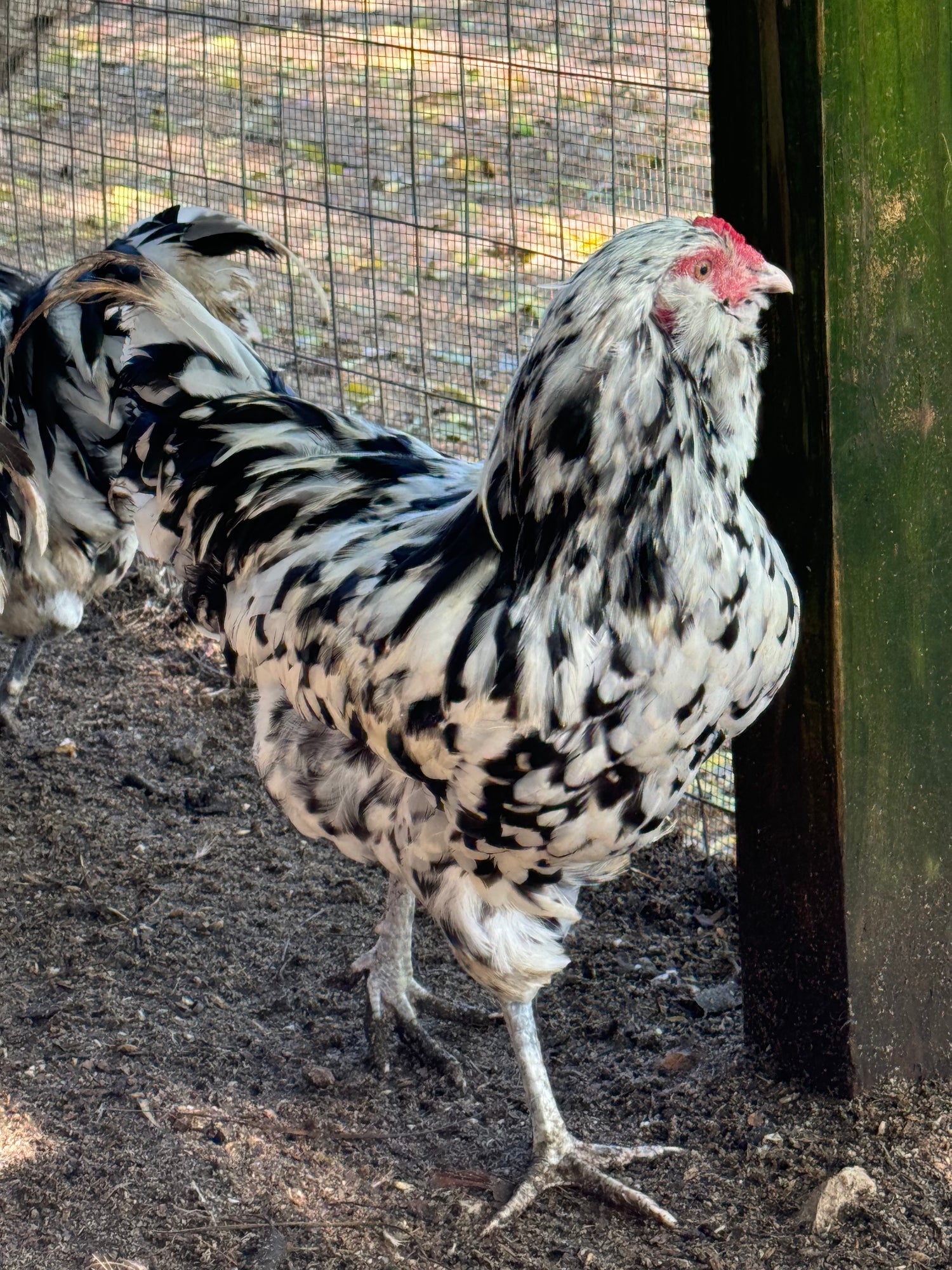
Paint? Ermine? Wait... What?!?
Don’t worry — most of the time, paint and ermine mean the exact same thing. Both describe the same genetic interaction: a black base (E) with one copy of dominant white (I/i⁺), creating those random white patches. “Paint” is the term most often used for Silkies, while “Ermine” is common in Ameraucanas.
To throw a wrench into the naming game — in a few older standards, “ermine” can also mean a Columbian pattern (white body with black neck and tail). If you see the term used outside of Silkies or Ameraucanas, make sure to double-check which meaning is intended.
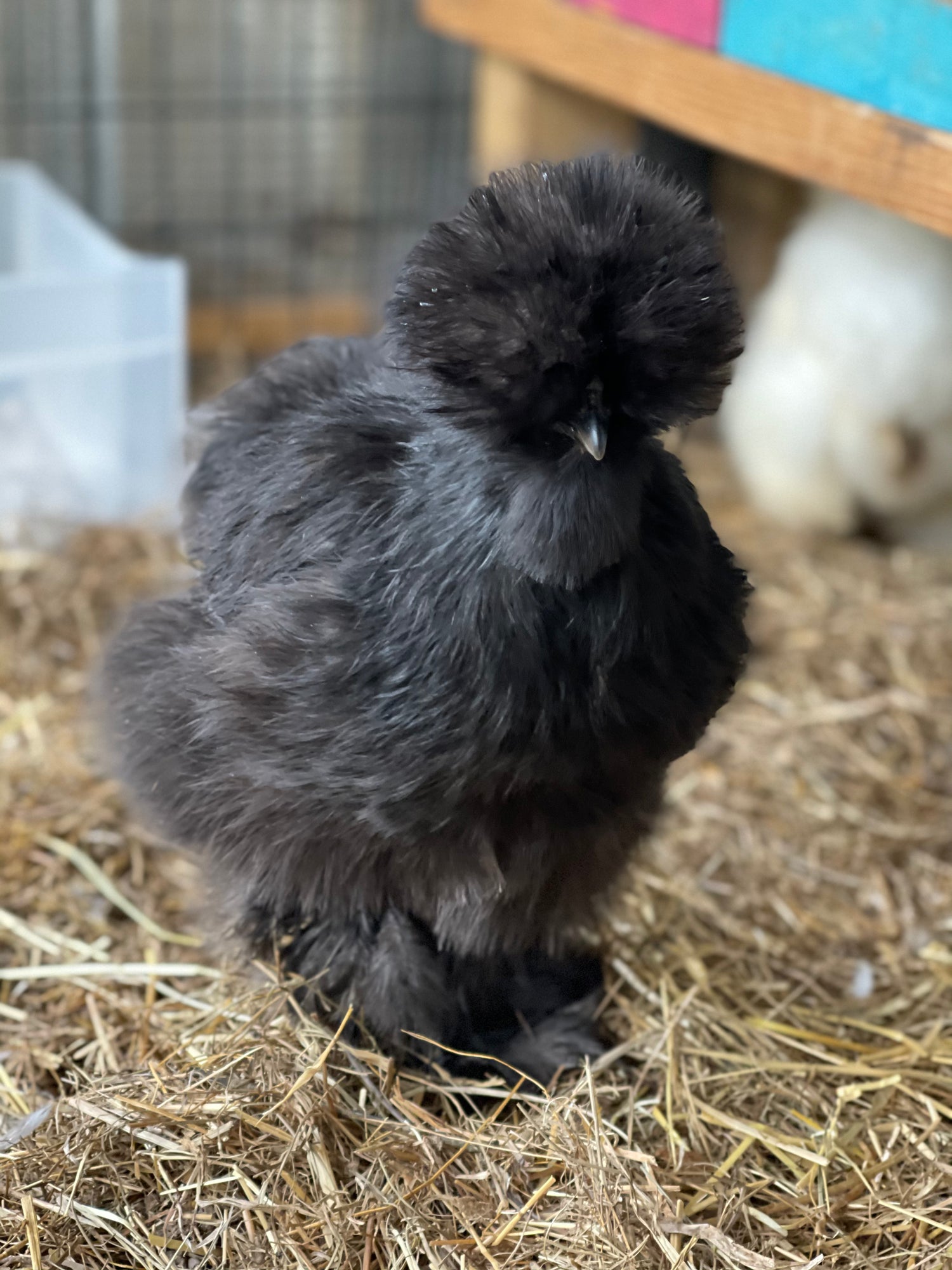
Best Breeding Practices for Paint
The most reliable way to produce paint coloration is to use a black rooster (i⁺/i⁺) over dominant white and paint hens (I/i⁺).
Here’s what you can expect from those crosses:
Black Rooster (i⁺/i⁺) × Dominant White Hen (I/i⁺)
→ 50% I/i⁺ (Paint) and 50% i⁺/i⁺ (Black)
Black Rooster (i⁺/i⁺) × Paint Hen (I/i⁺)
→ 50% I/i⁺ (Paint) and 50% i⁺/i⁺ (Black)
Dominant white (I) is essential to have in your breeding line — it’s what creates paint in the first place. Using a black rooster keeps your black line strong, avoids producing too many I/I (solid white) chicks, and keeps your paint results colorful and predictable.
⚠️ Why Not Paint × Paint Too Long
Breeding paint (I/i⁺) to paint (I/i⁺) will still produce paint chicks, but over time you’ll notice the spots start to look less crisp and more washed out. Too many birds carrying two copies of dominant white (I/I) results in more solid white chicks and fewer with bold, well-defined spots.
Keeping a black rooster (i⁺/i⁺) in the program restores strong pigment to the line. This makes the paint pattern sharper, with better contrast between the black and white feathers, and keeps the overall look consistent from generation to generation.
Spotting Dominant White vs. Recessive White
Dominant white (I) and recessive white (c/c) can look similar at first glance — both can produce white birds — but they work very differently. Knowing which one you have in your flock is crucial if you want to keep paint lines healthy.
Dominant White (I/I or I/i⁺):
Skin & Legs: Pink legs and skin are a strong indicator.
Black “Leaks”: May show small black spots, flecks, or even colored feathers on wings or hackles, especially in I/i⁺ birds.
Breeding Results: When bred to black (i⁺/i⁺), about half the chicks will be paint or white, half will be black.
Recessive White (c/c):
Skin & Legs: Leg and skin color follow the base bird’s genetics (yellow, slate, willow, etc.), not automatically pink.
No Leaks: Covers all pigment completely — no random black spots or colored feathers.
Breeding Results: When bred to black (without recessive white), all offspring will carry recessive white (c⁺/c) but none will be visibly white — they hatch black or whatever their base color is.
Knowing these differences helps you avoid accidentally introducing recessive white into a paint line, which would erase the paint pattern entirely when two carriers are bred together.
The importance of "Splits" in your Paint Breeding Program
-
What Does "Split" Mean in Paints?
In paint breeding, a split is a black bird that carries one copy of dominant white (I/i⁺) — even though it shows no visible white at all. To the eye, a split looks like any other solid black bird, but genetically it has the ability to pass on dominant white and produce paint chicks when paired correctly.
Splits are important for keeping pigment strong in the line while still maintaining the dominant white gene. Breeding a split to a paint hen keeps spots crisp and contrast high, while still giving you paint chicks in the next generation.
-
Incomplete Dominant: NOT RECESSIVE
It is important to distinguish the difference between "Splits" in other types of genetic expression compared to Paint. Paint works differently because dominant white (I) is incompletely dominant, not recessive. A paint split (I/i⁺) technically should show some white — but expression can vary a lot. Some birds with one copy of dominant white look fully painted, some lightly spotted, and some so minimally marked they look solid black.
That’s why in paint breeding, “split” refers to a black-looking bird that genetically carries one copy of dominant white (I/i⁺) — even though you can’t see it. It’s not “hiding” the gene like a recessive split — it’s just expressing it so faintly you can’t tell by looking.
-
Split (I/i⁺, looks black) × Paint/Ermine (I/i⁺)
- 25% I/I → White
- 50% I/i⁺ → Paint
- 25% i⁺/i⁺ → Black
⭐ Useful for keeping strong pigment and still producing paints
- 25% I/I → White
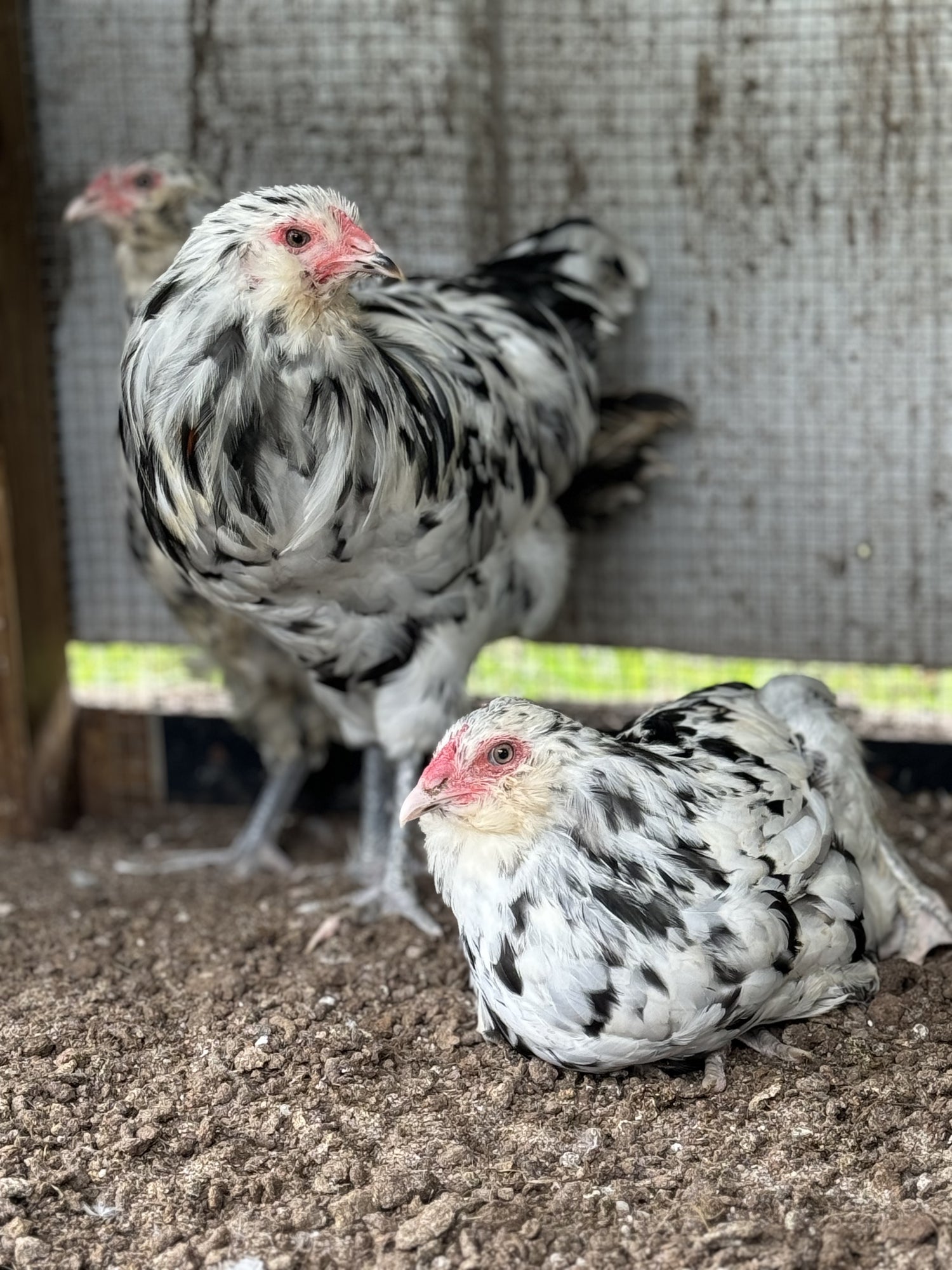
Find our Paint breeds
If you’re interested in our stunning Paint (or Ermine) breeds, you’re in the right place! These unique color varieties are a highlight of our breeding program, showcasing beautiful patterns and exceptional quality. Explore the options below to learn more and bring these beauties to your flock.
Akers Farm
Silkie Hatching Eggs Hens Choice, Black, White, project 4 Satin/Frizzle NPIP & AI
Share
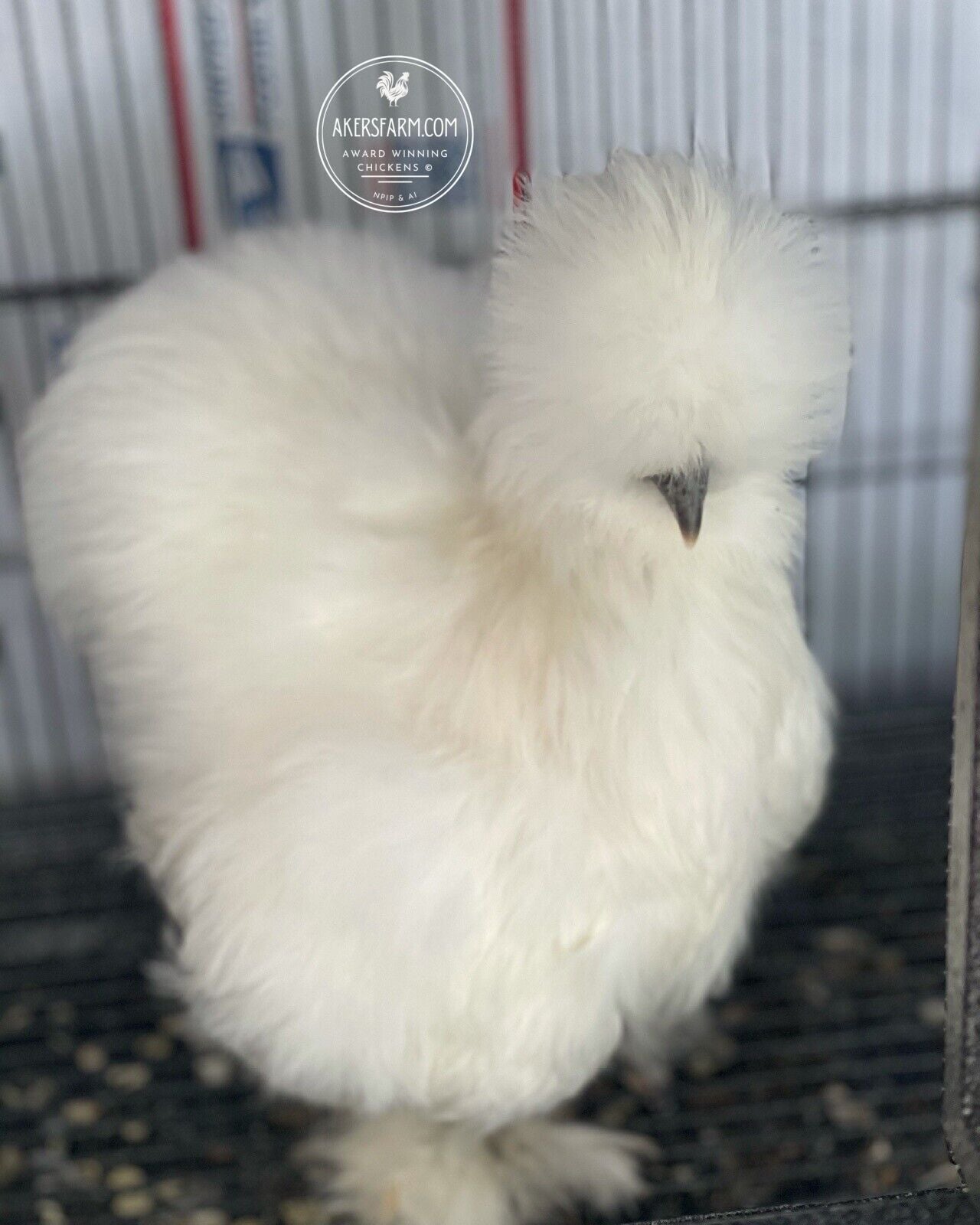
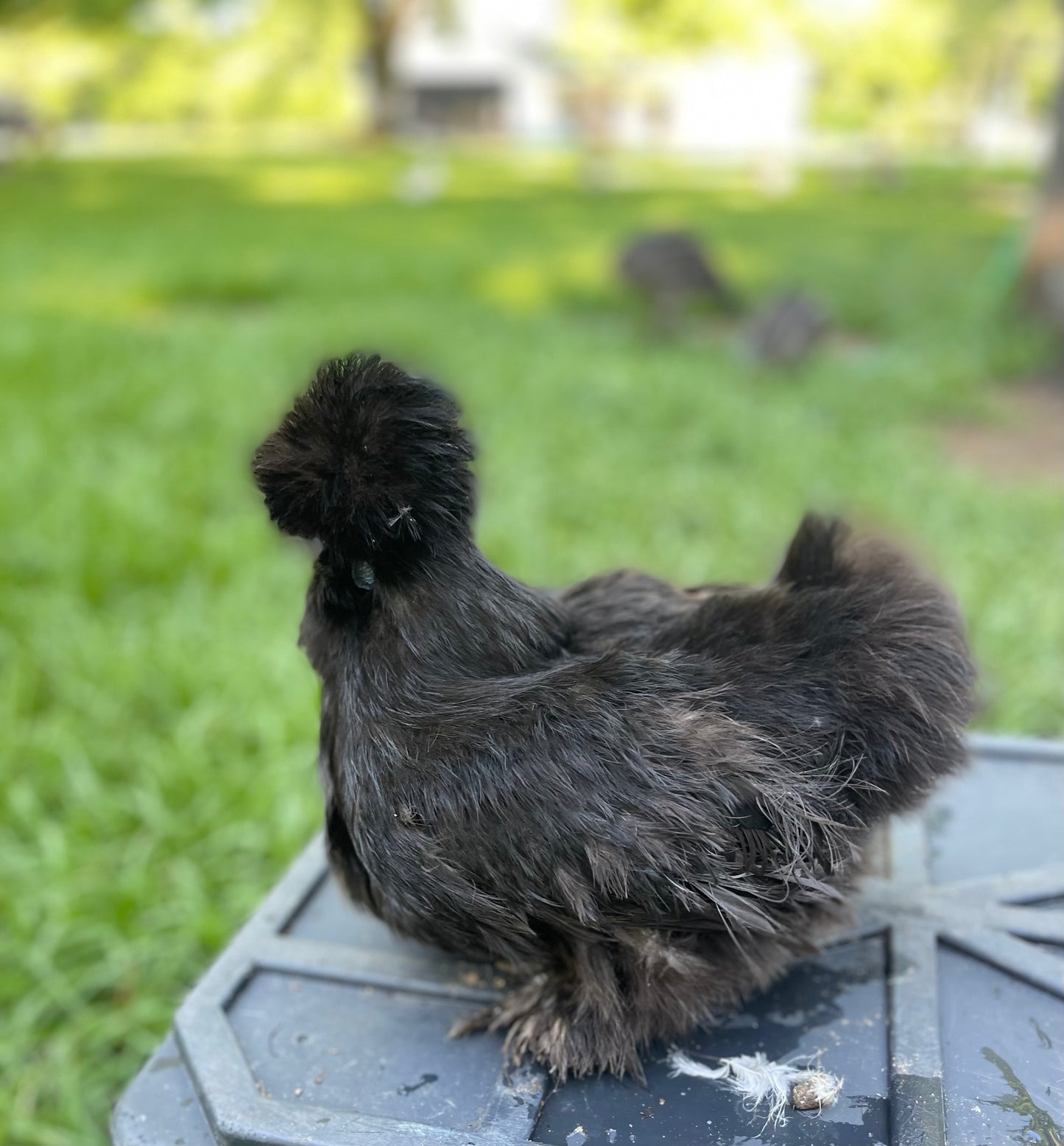
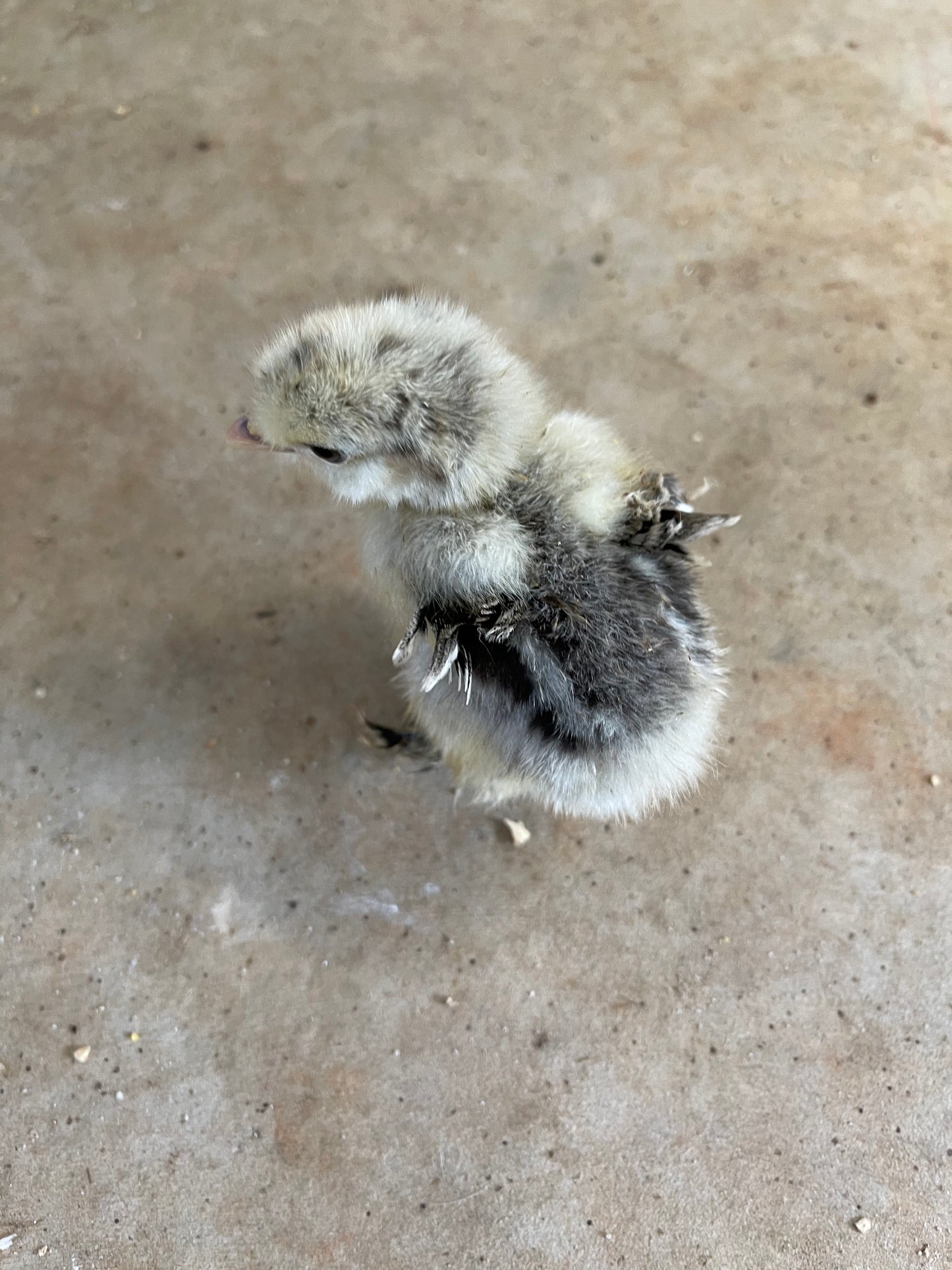
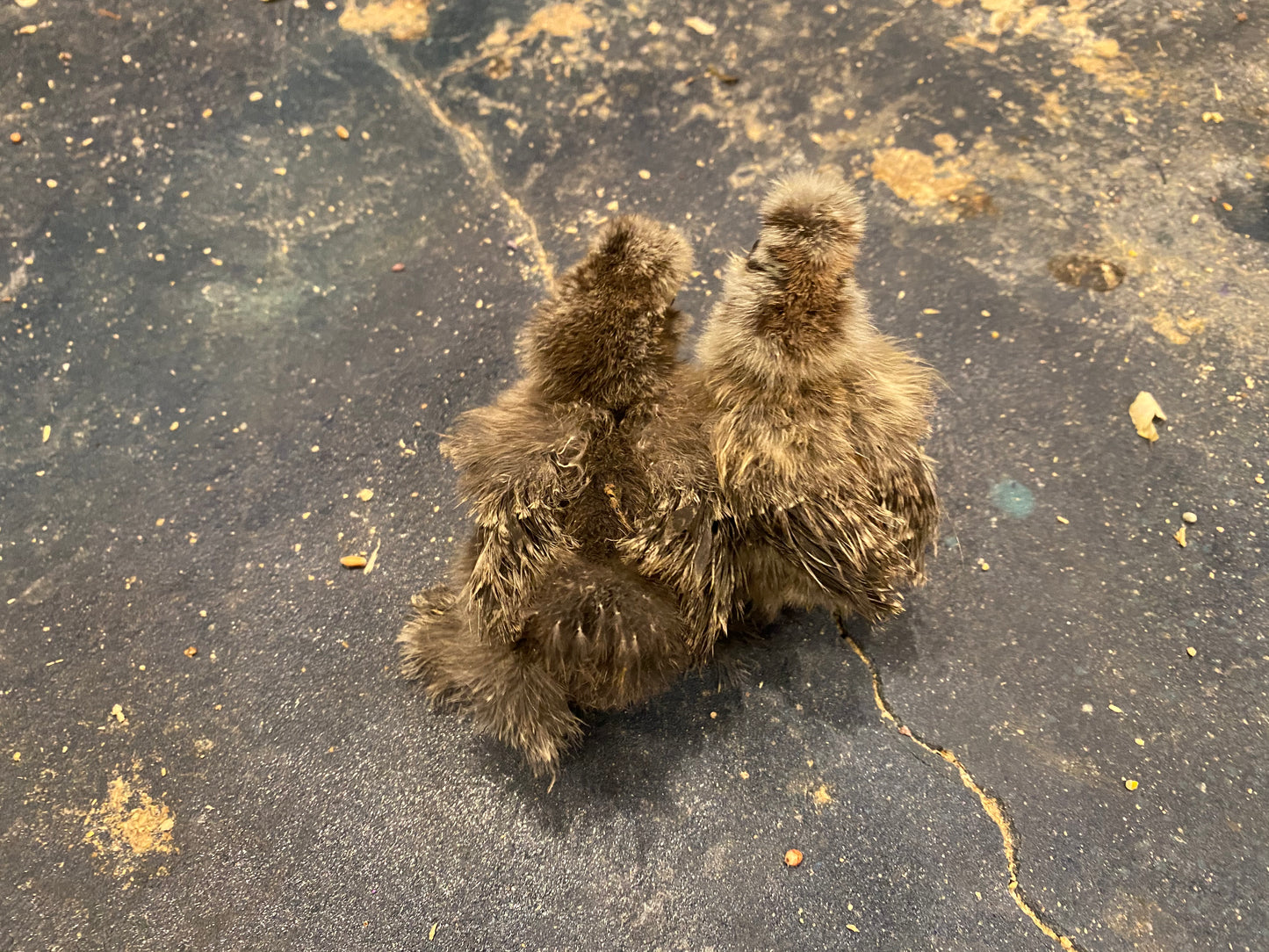
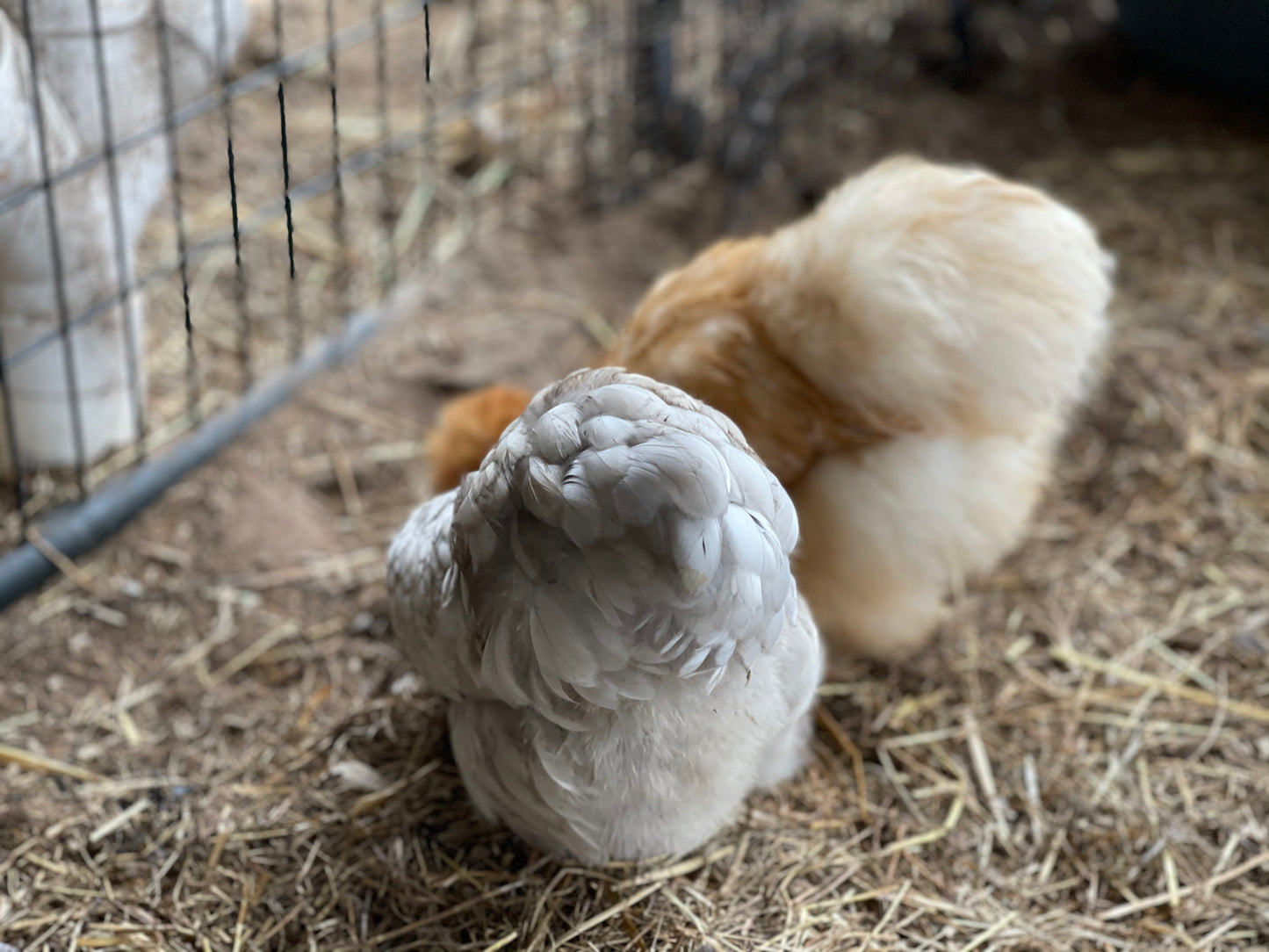
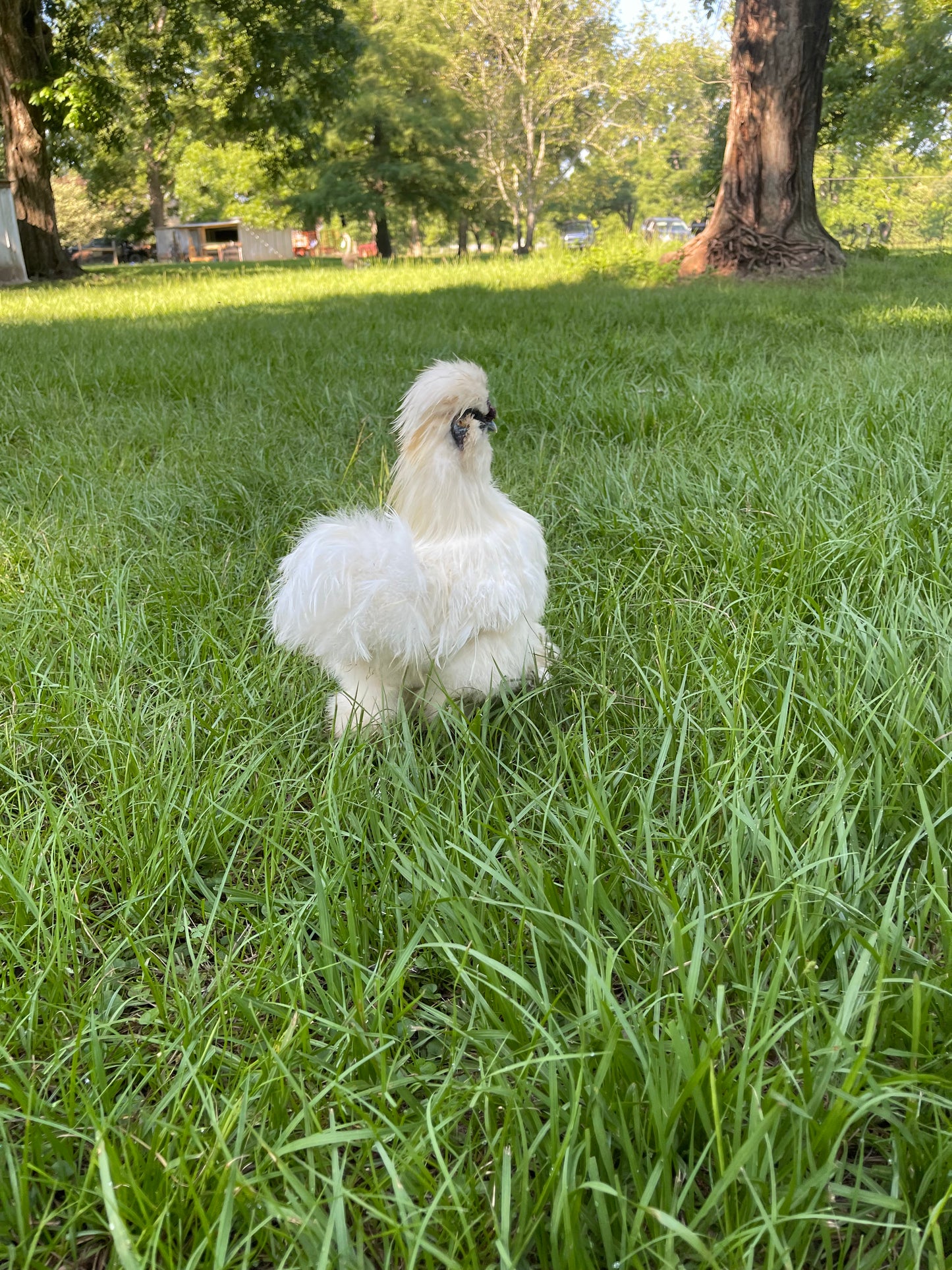
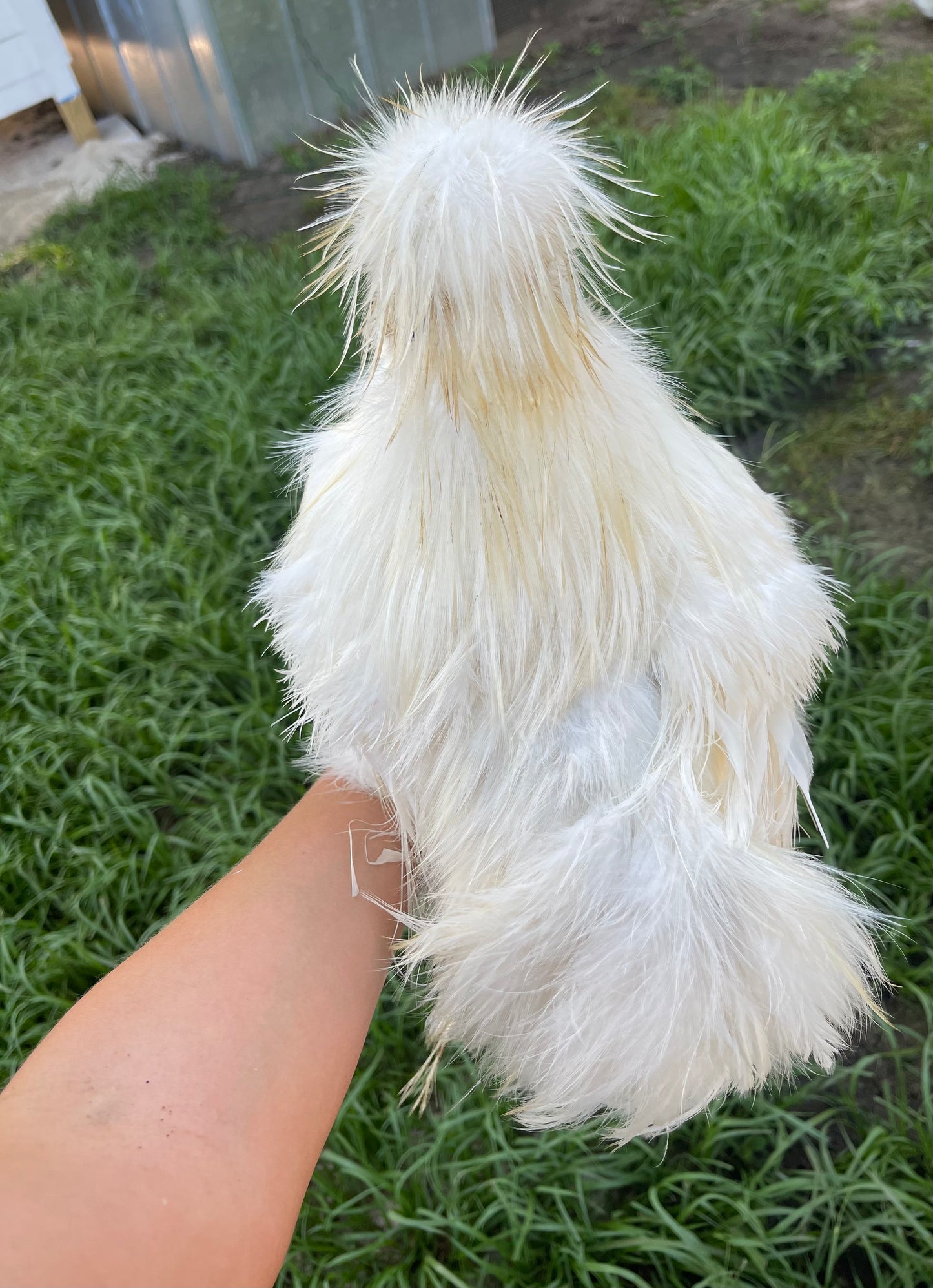
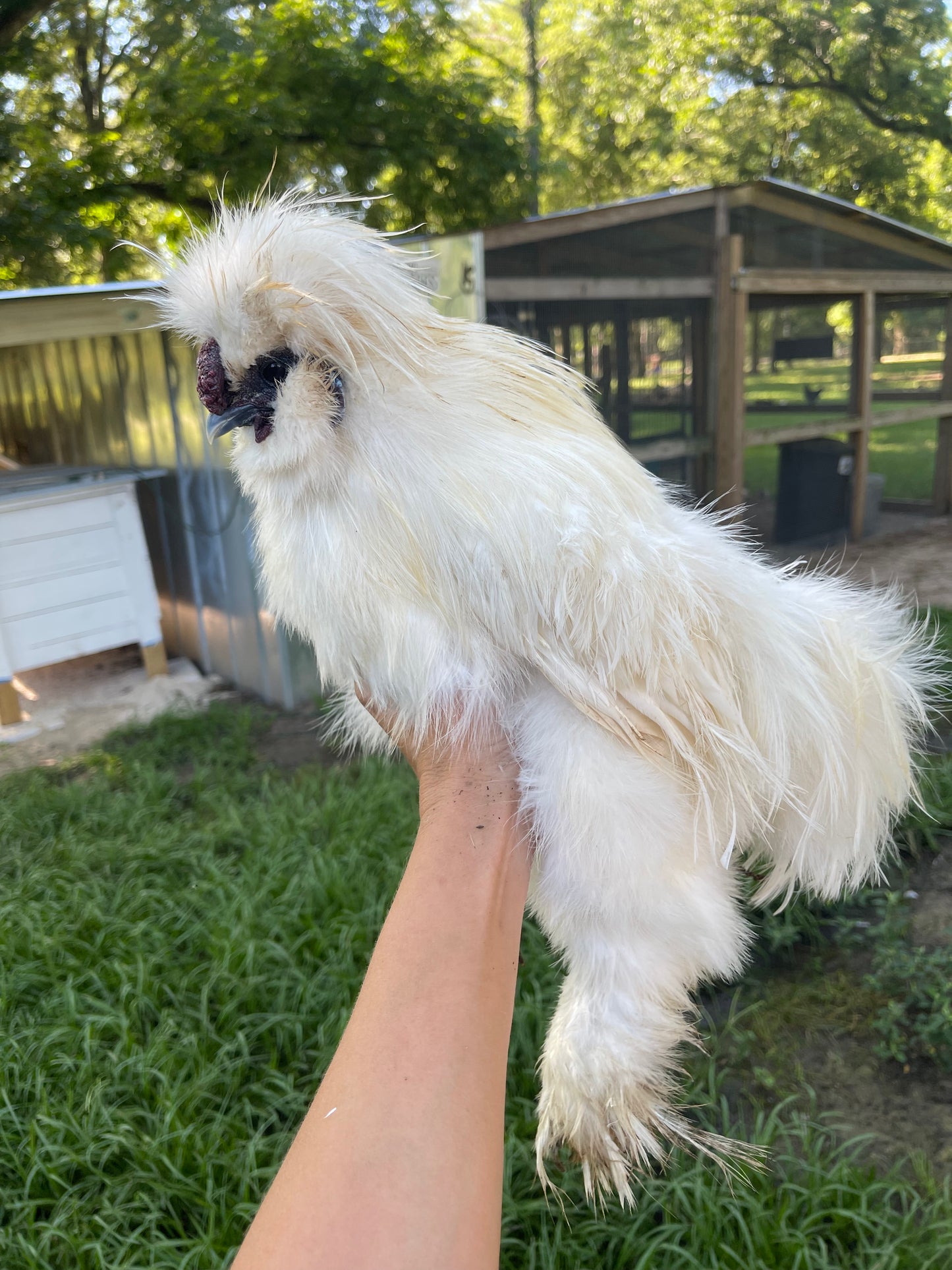
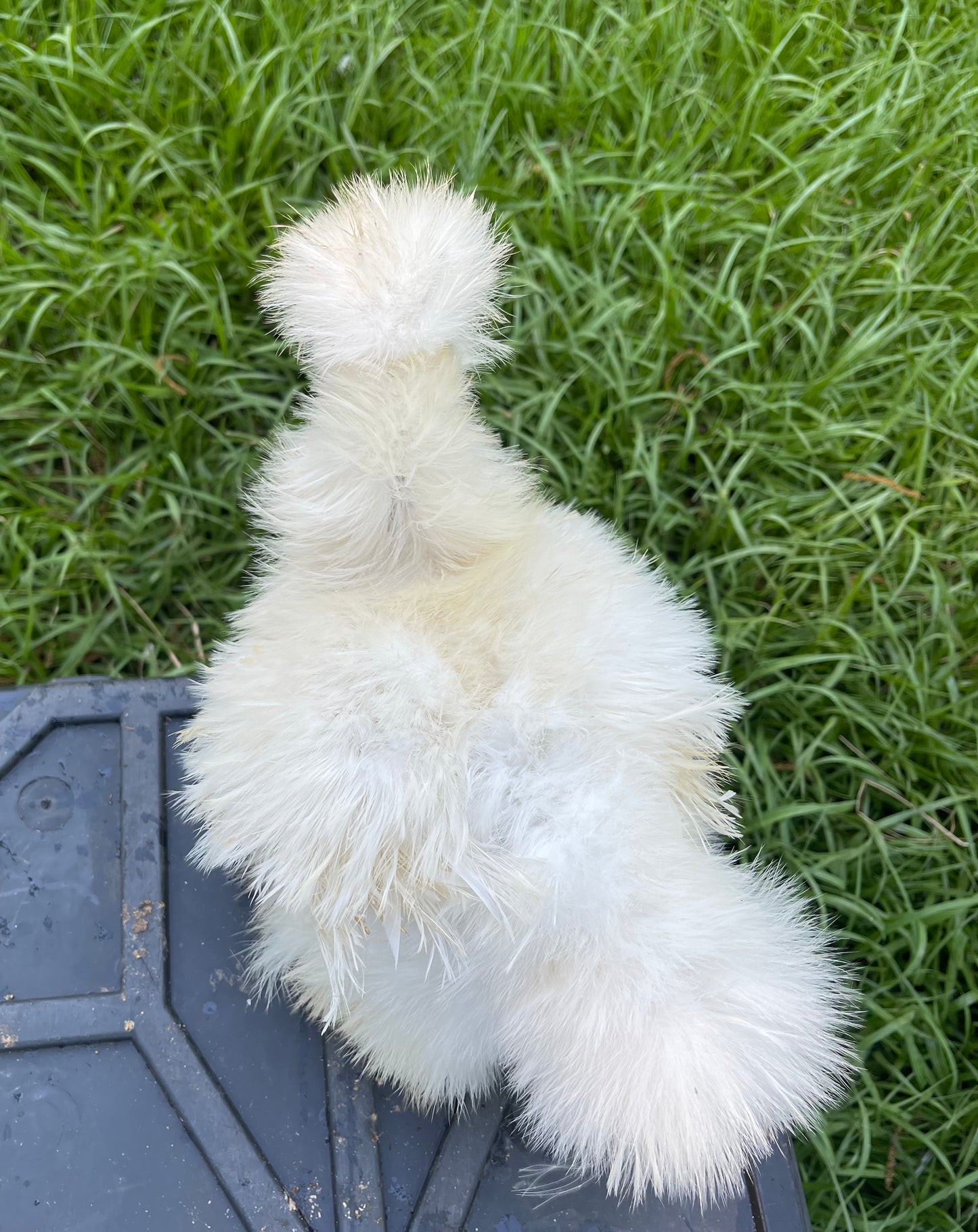
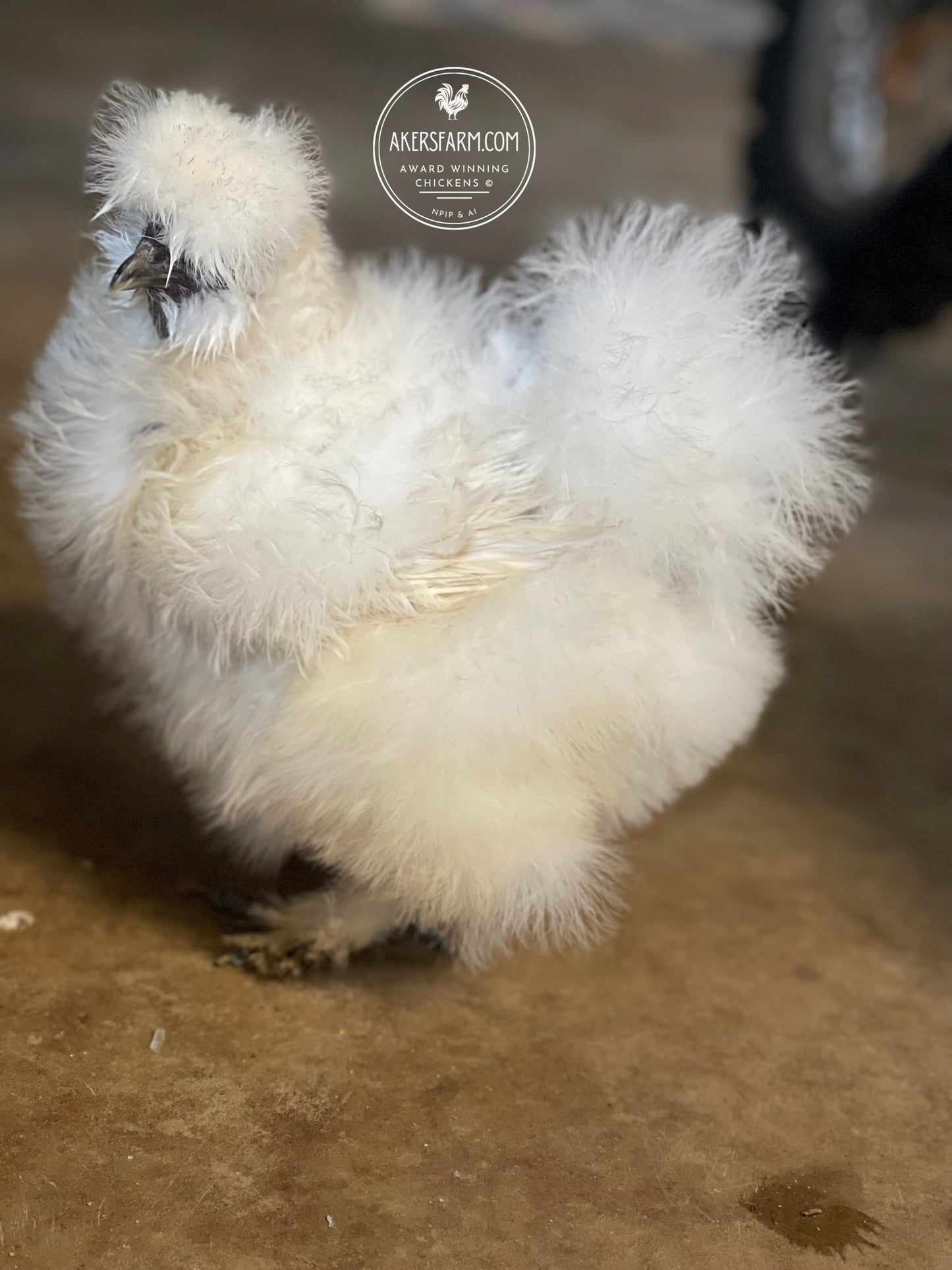
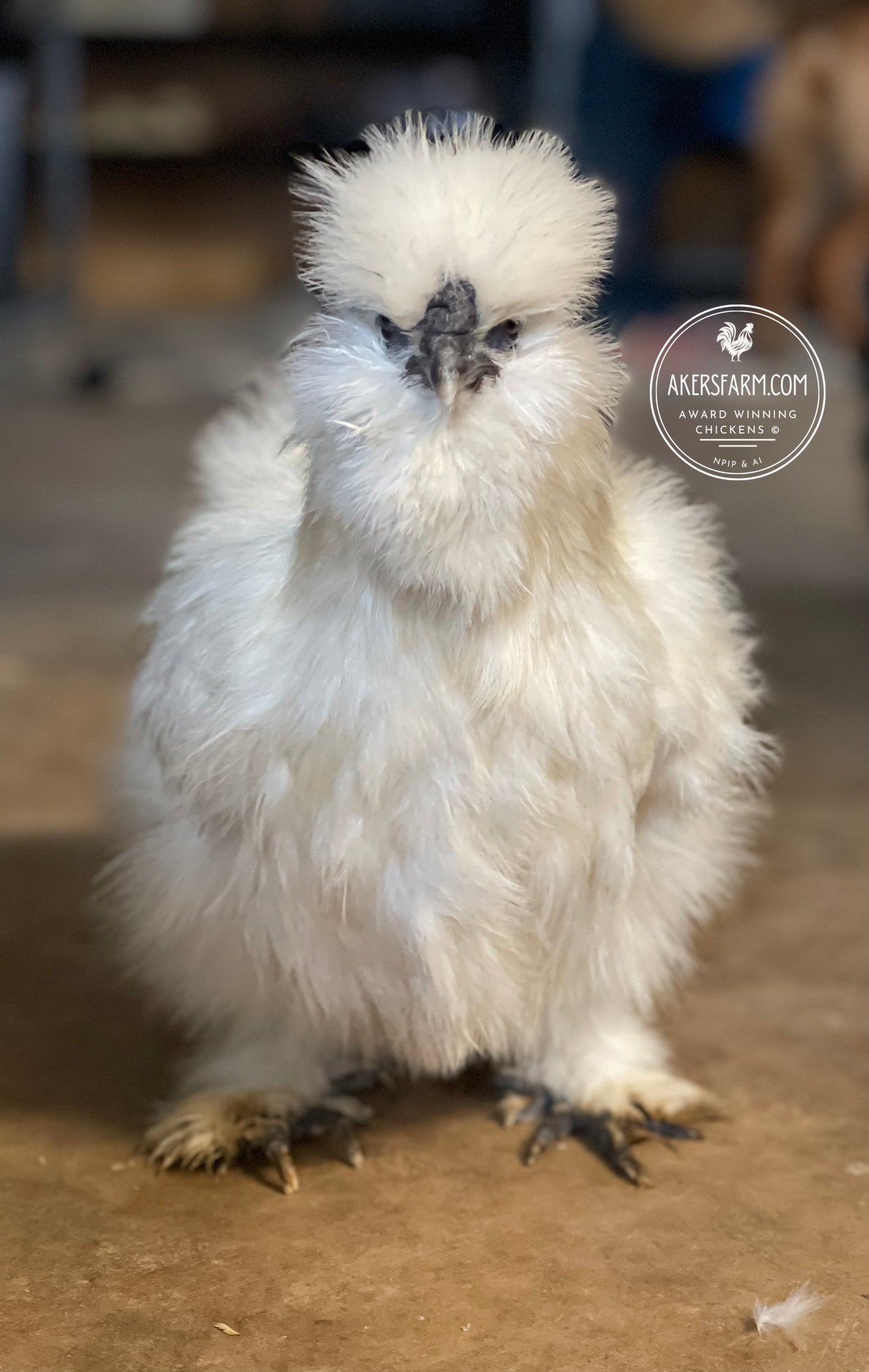
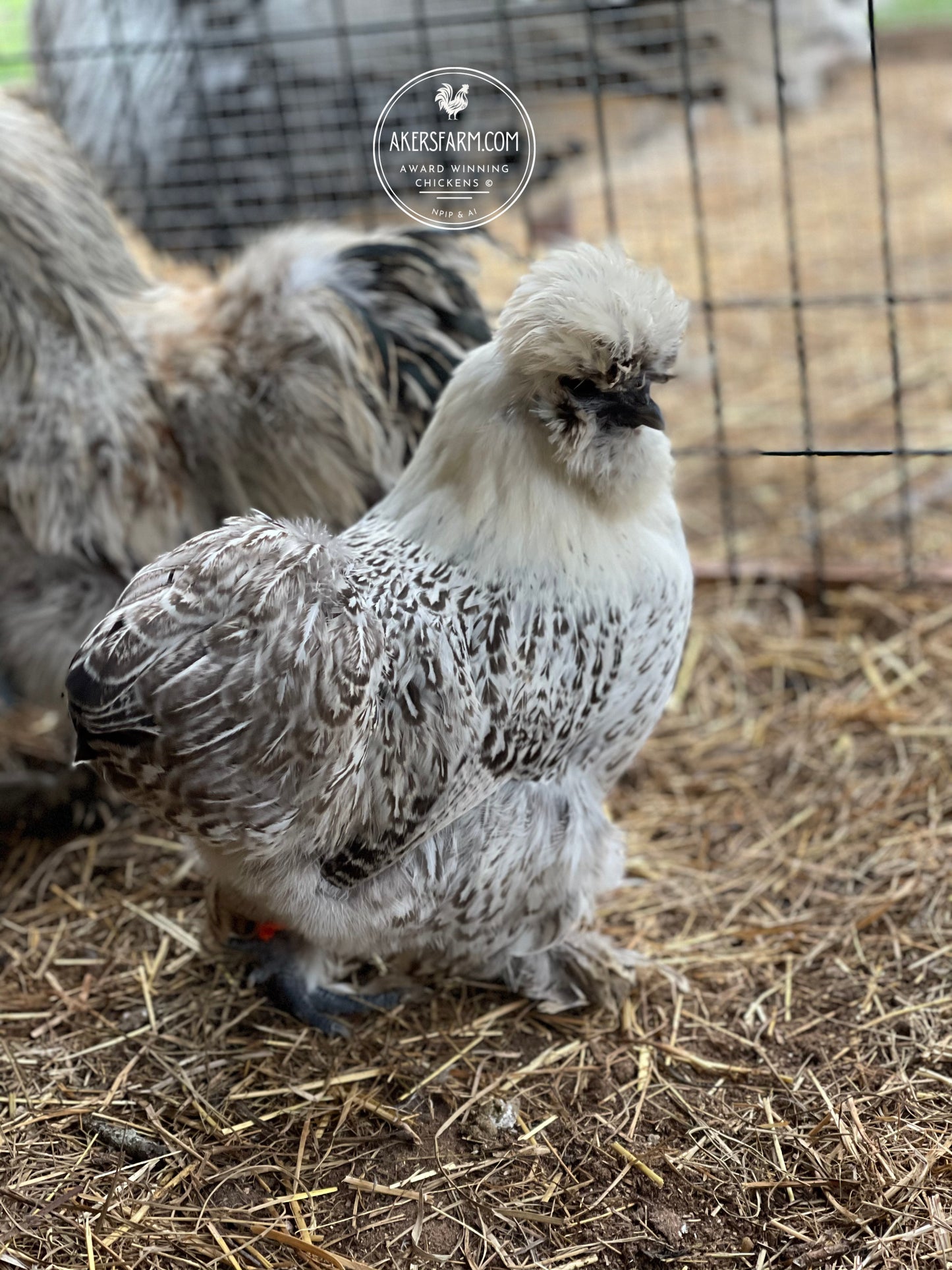
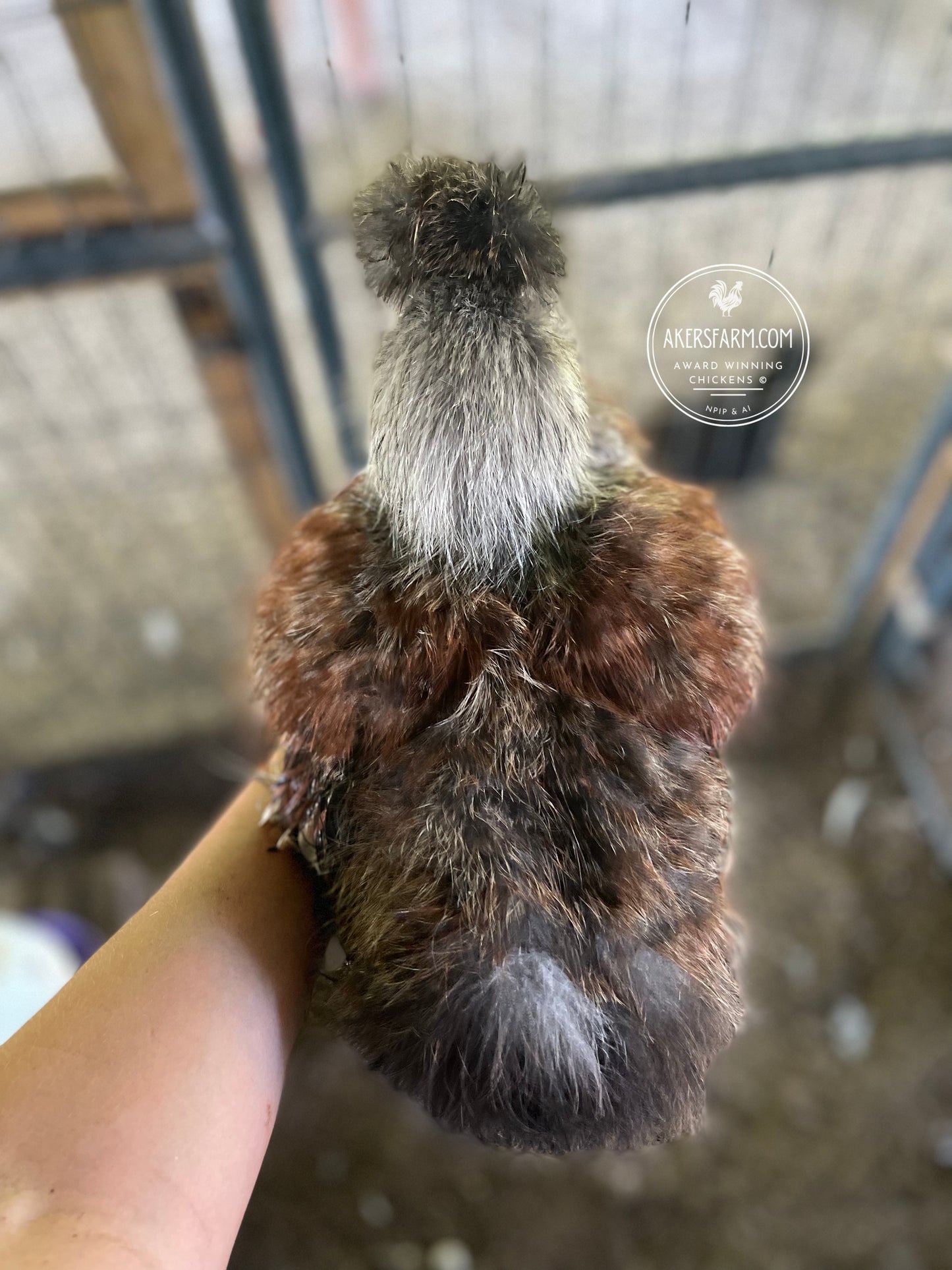
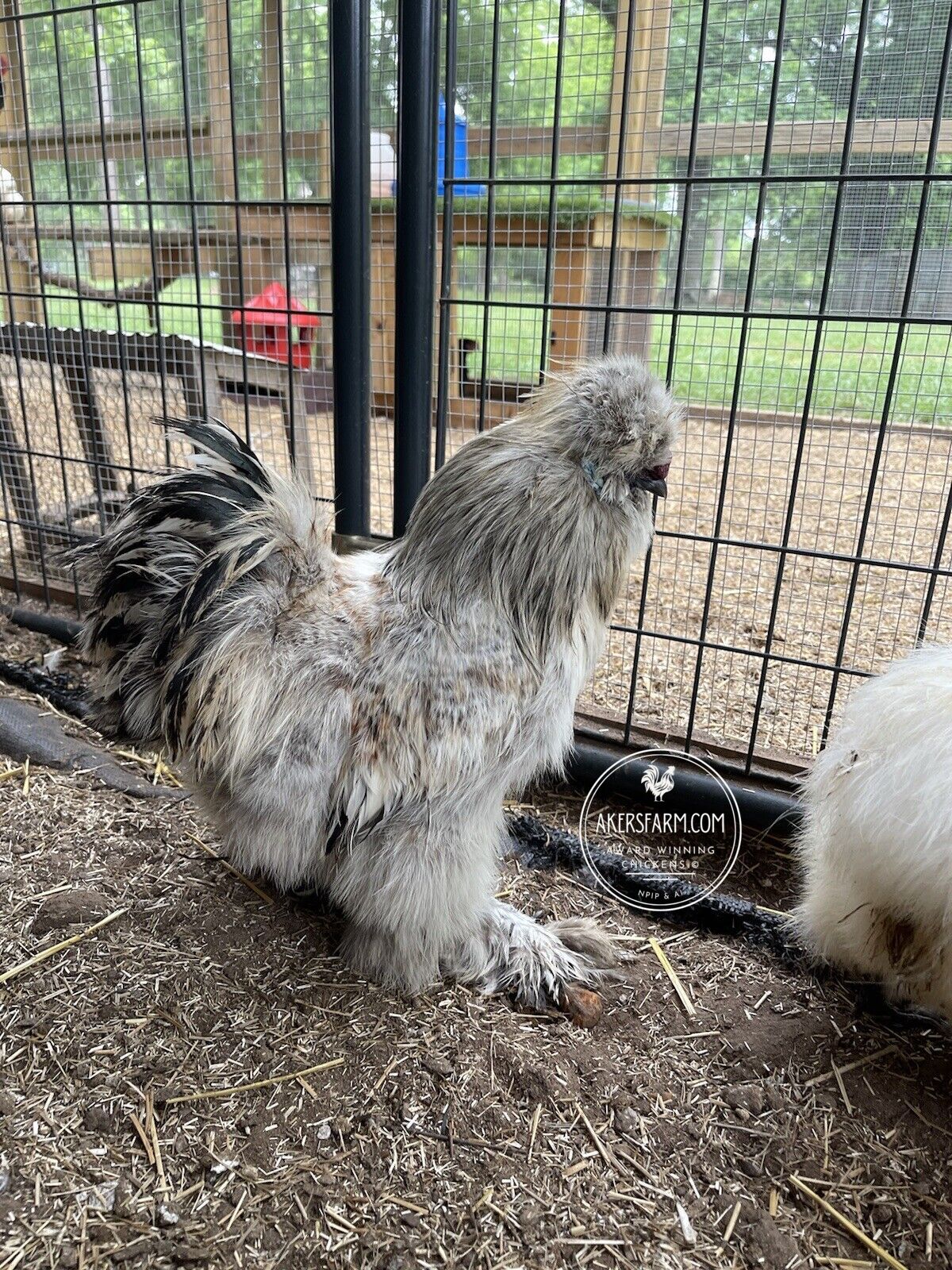
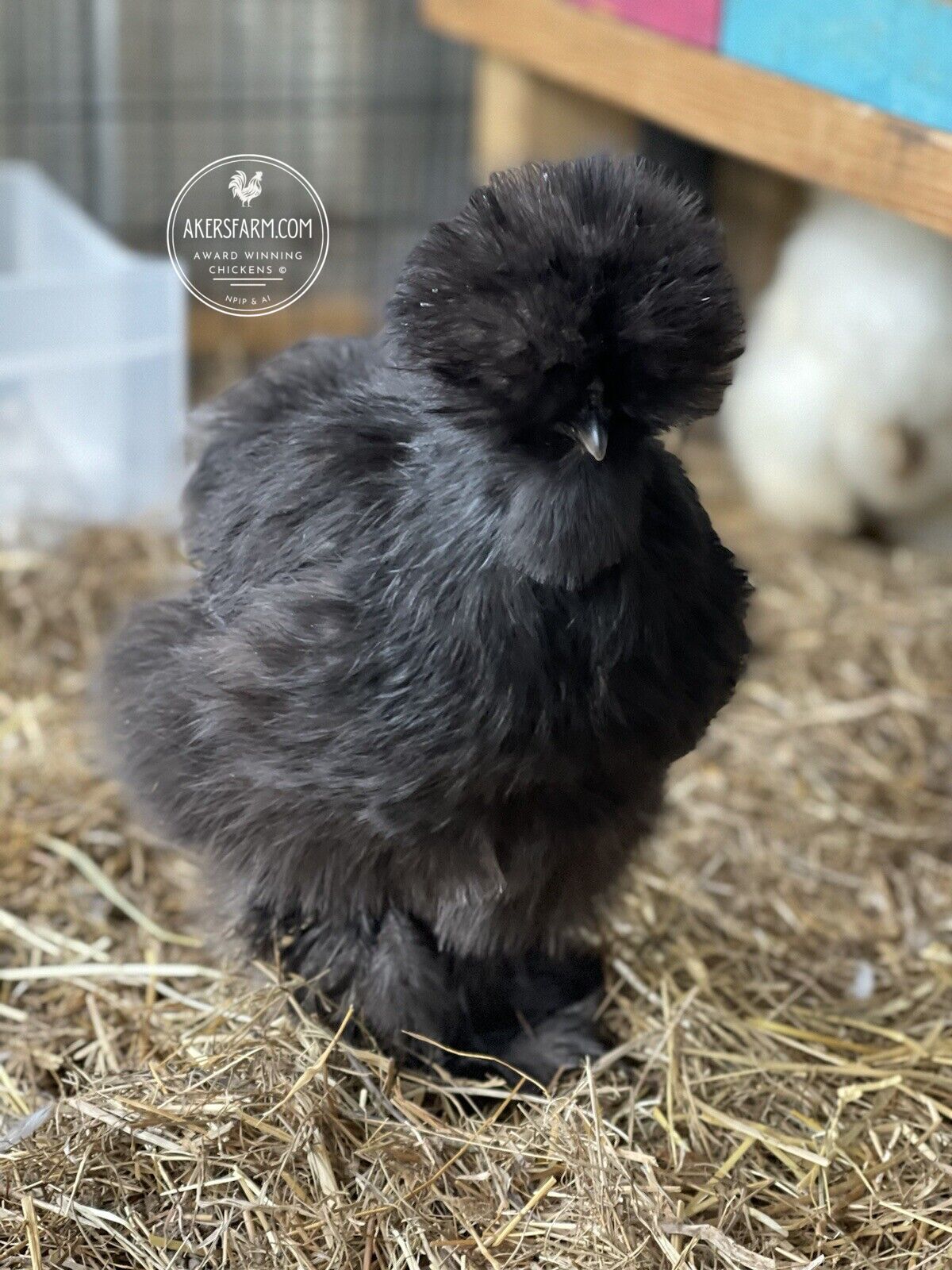
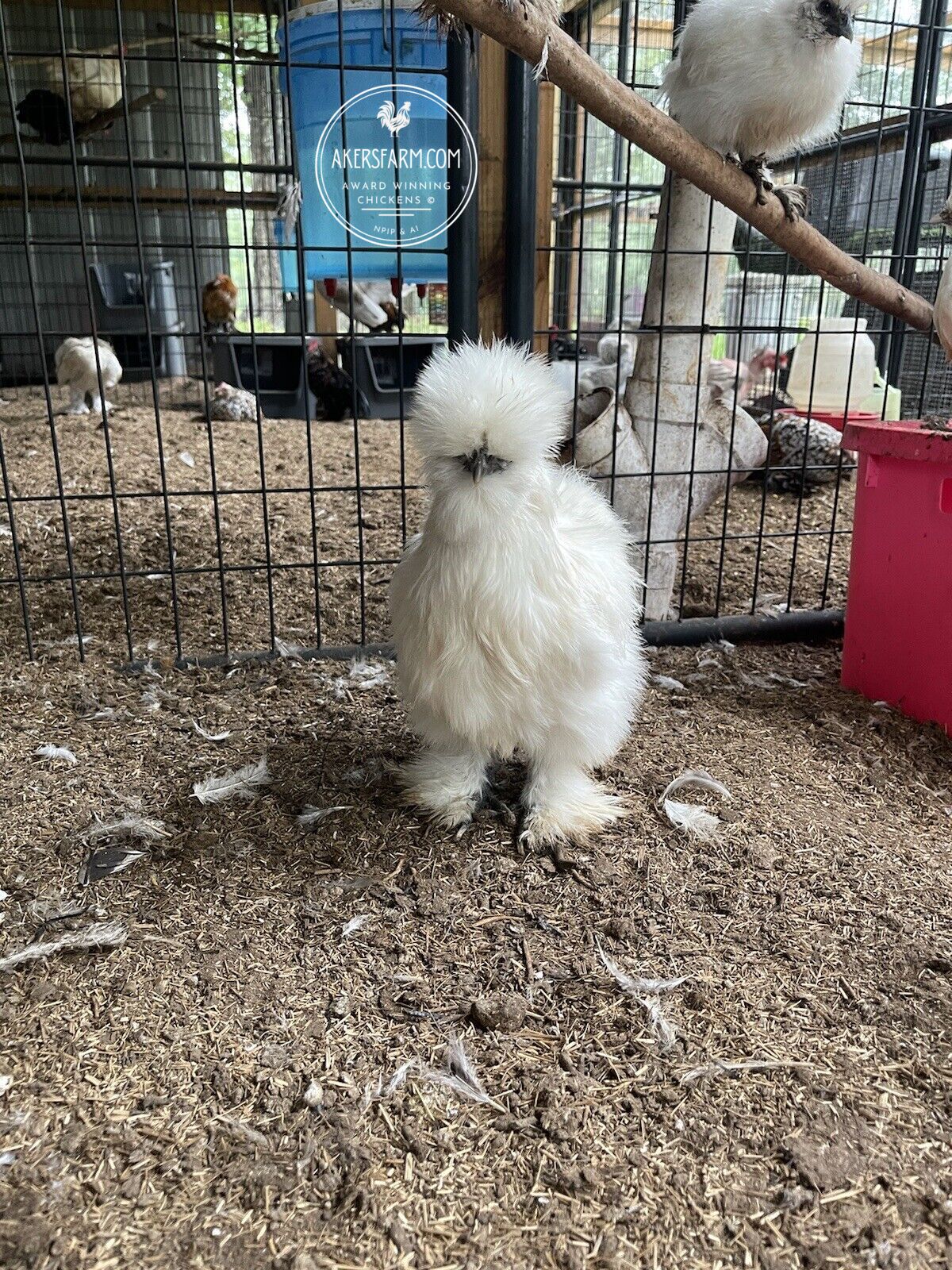
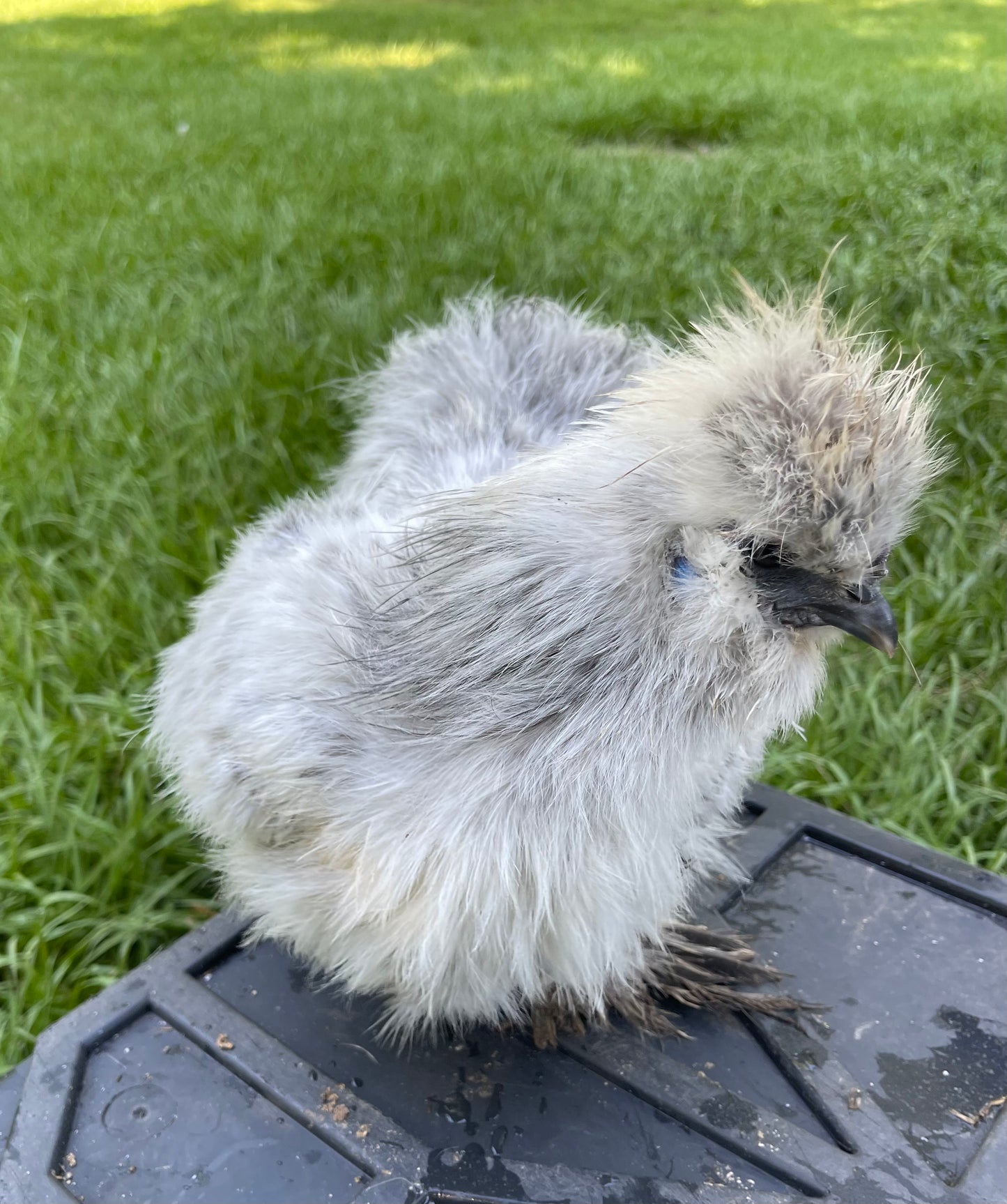
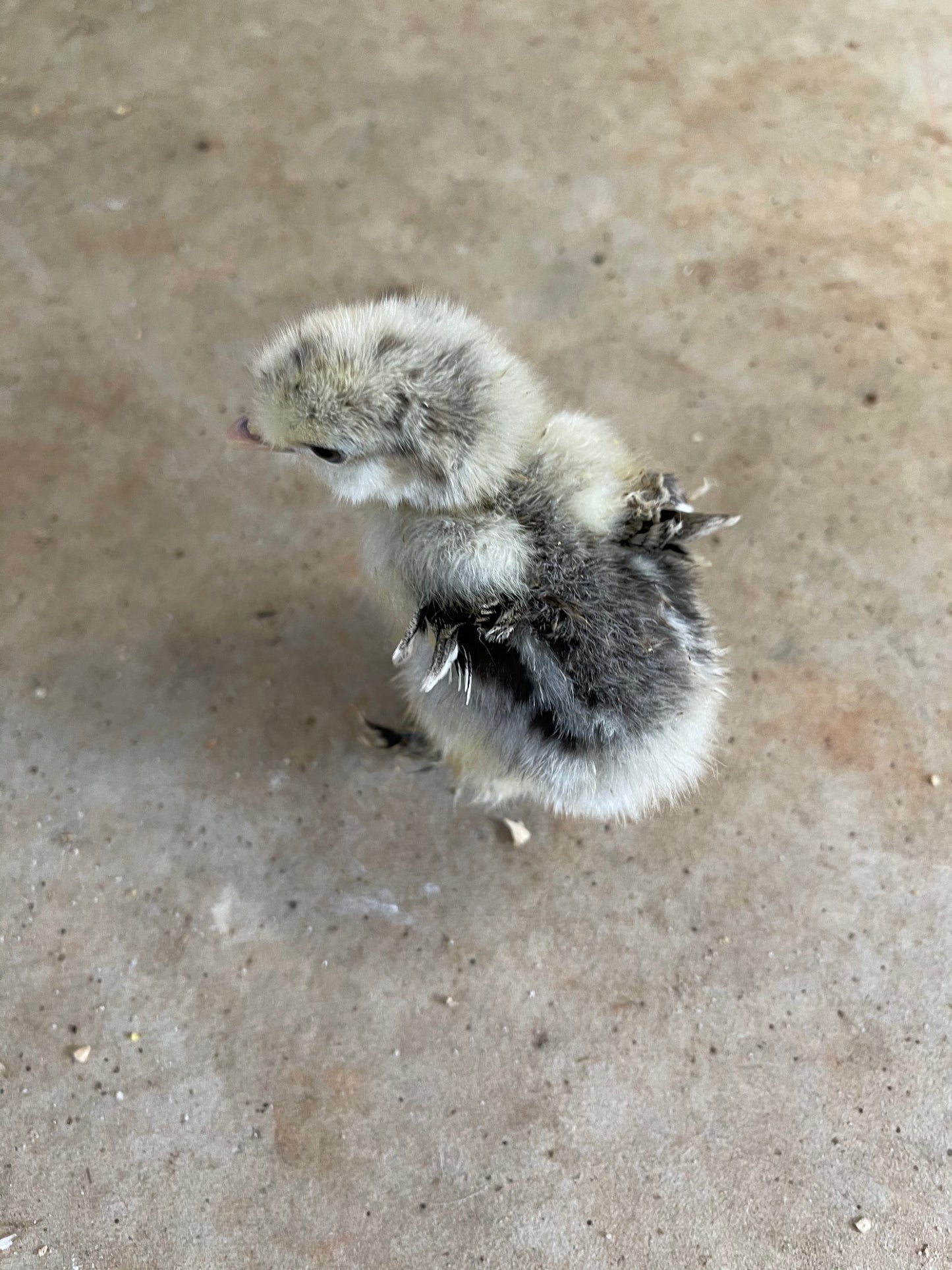
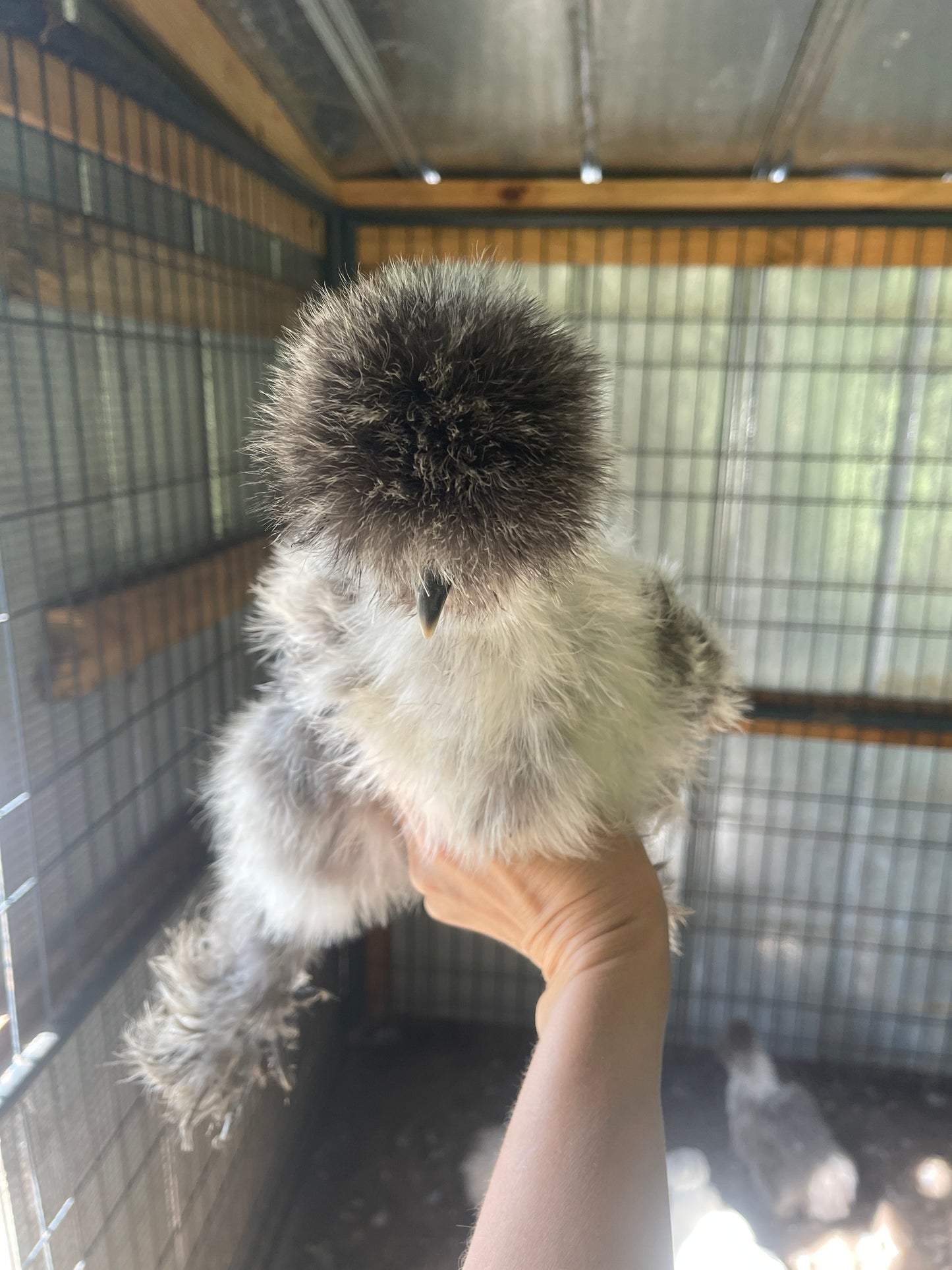
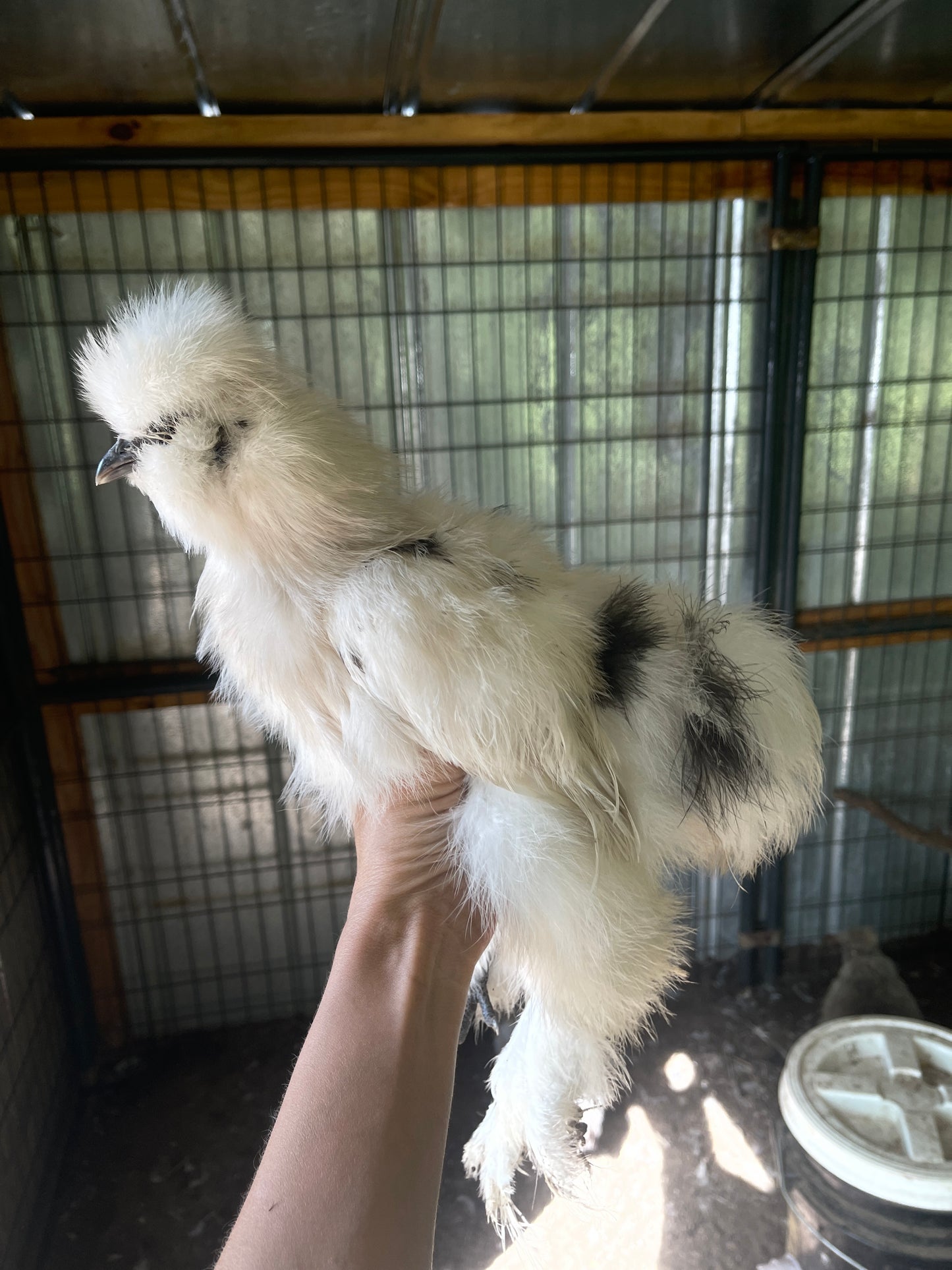
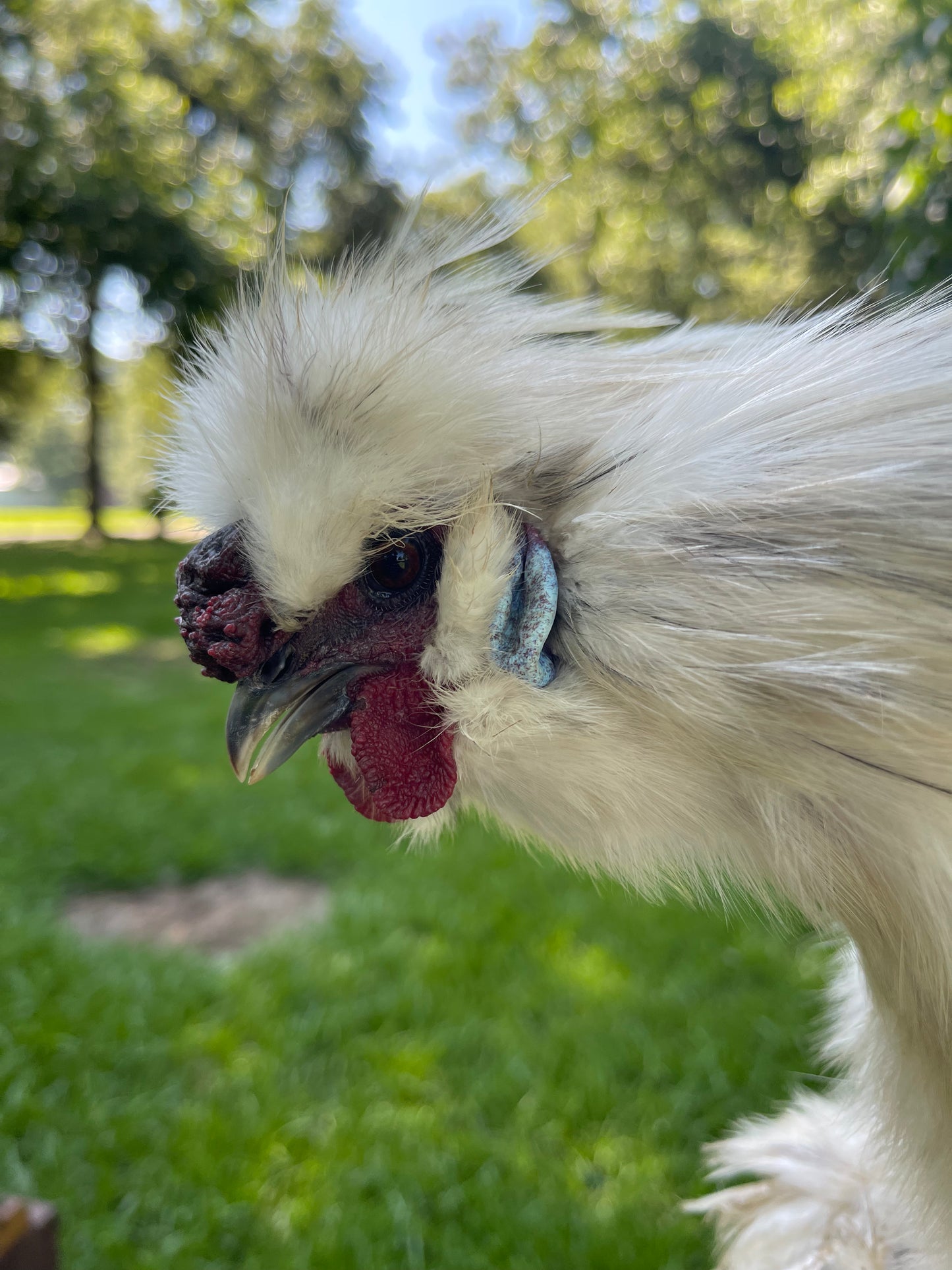
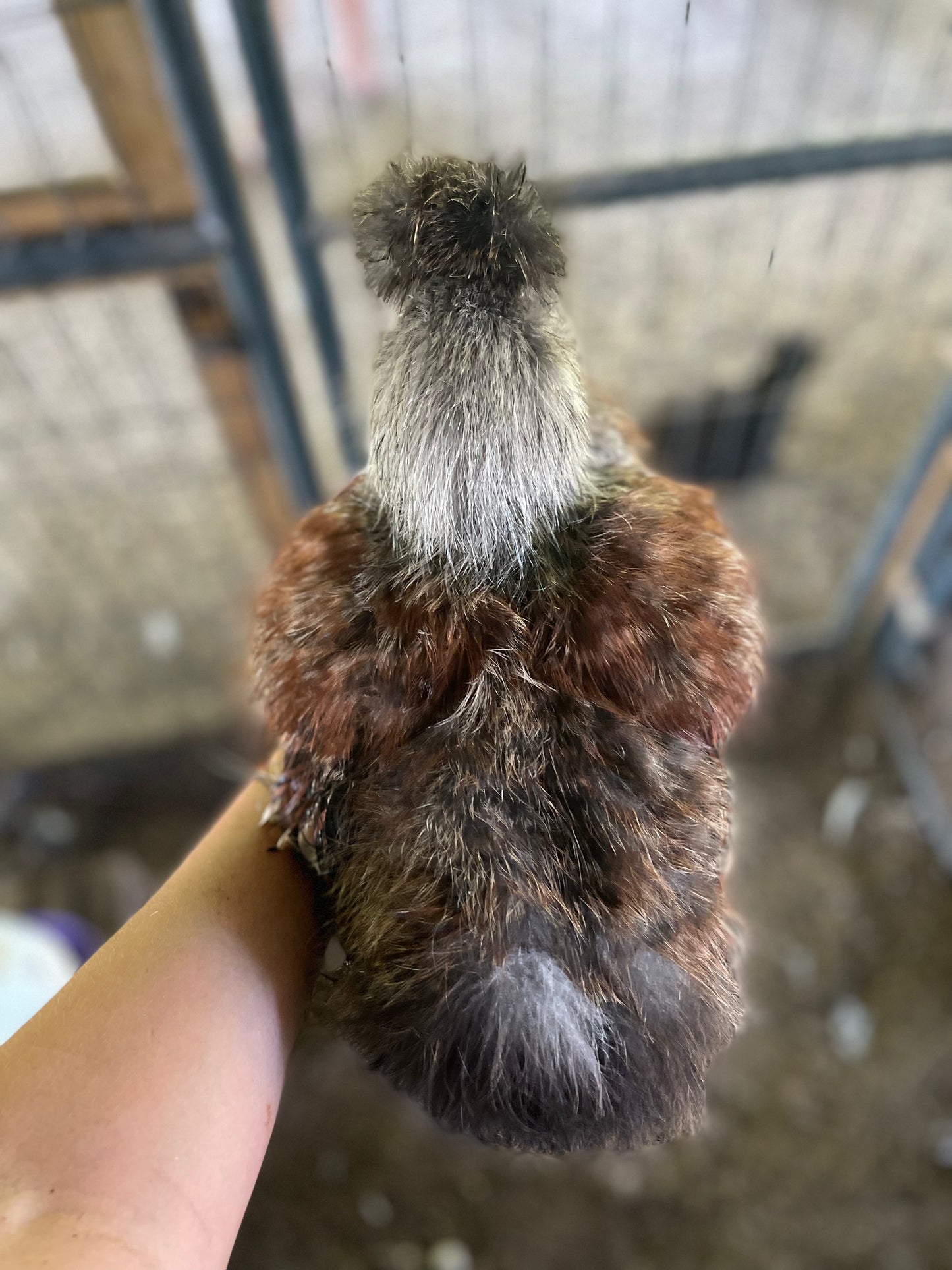
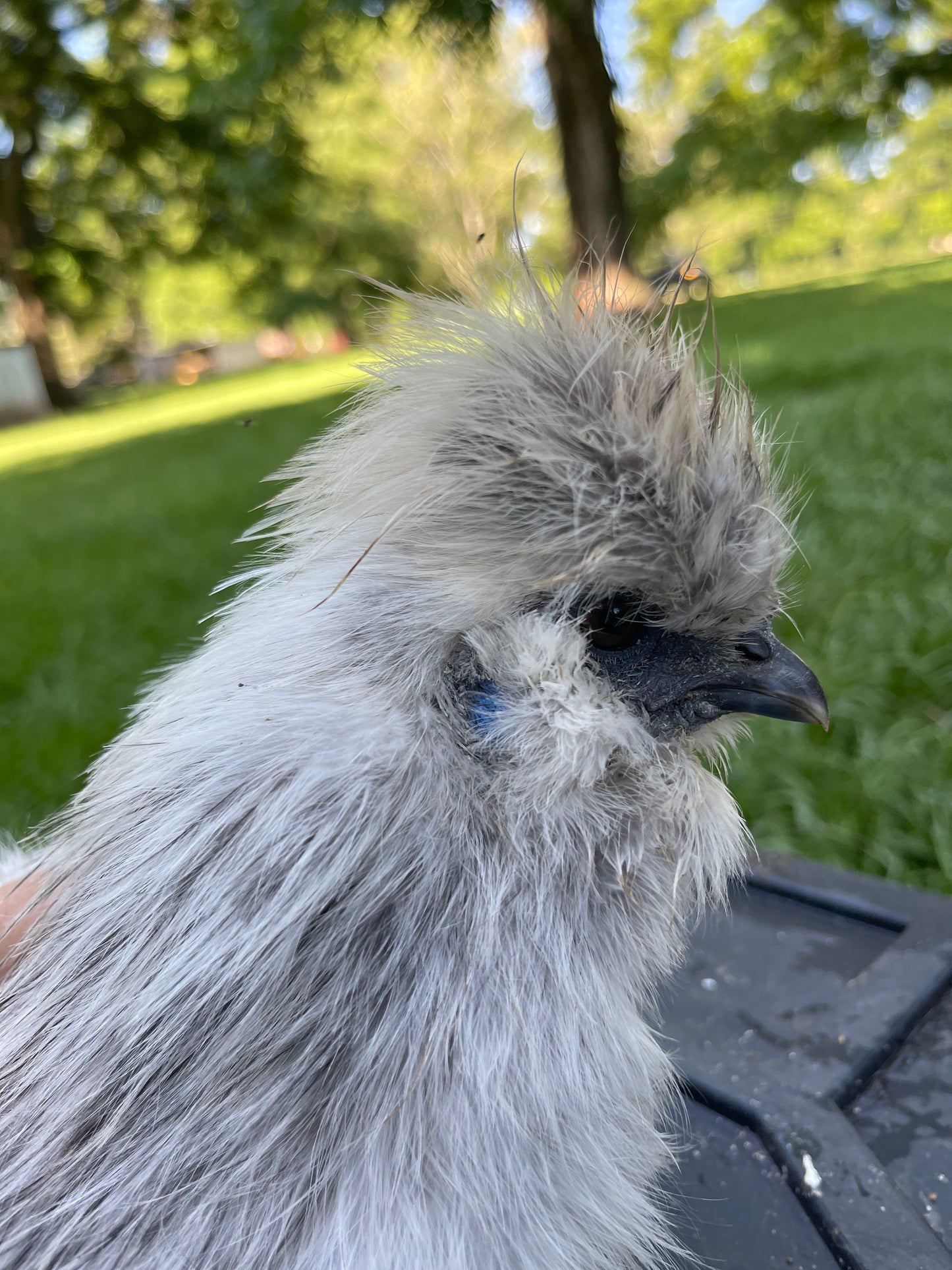
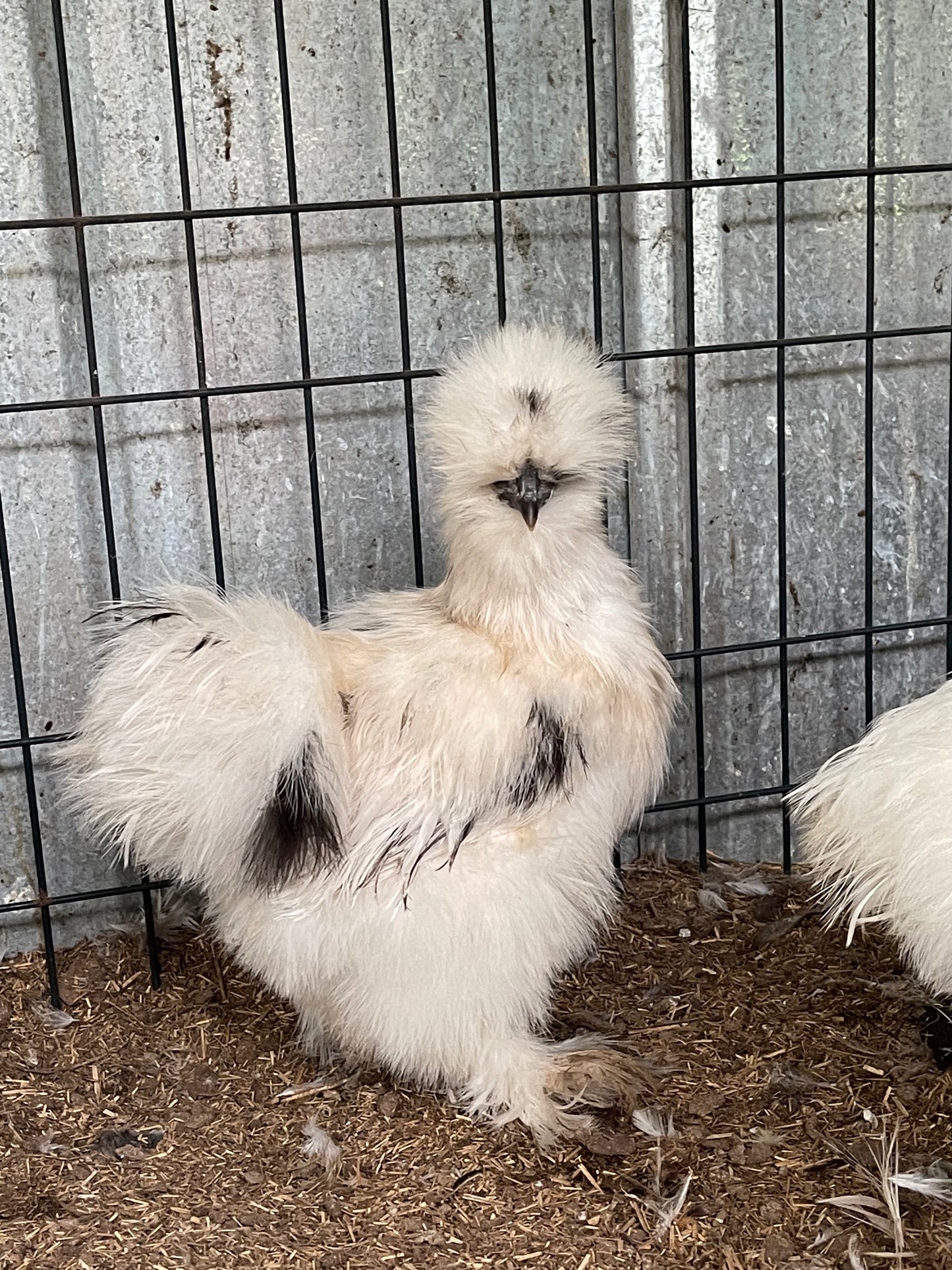
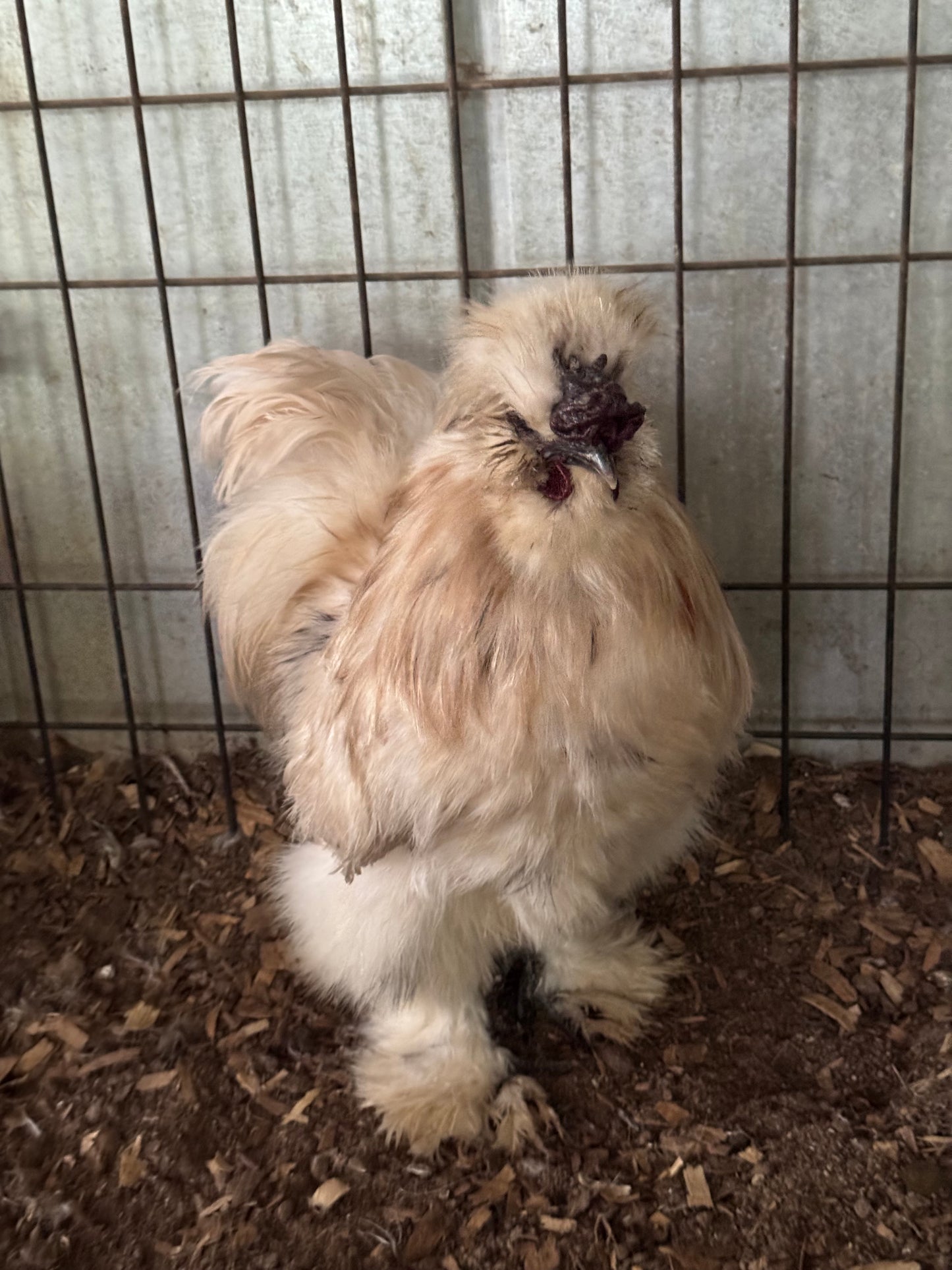
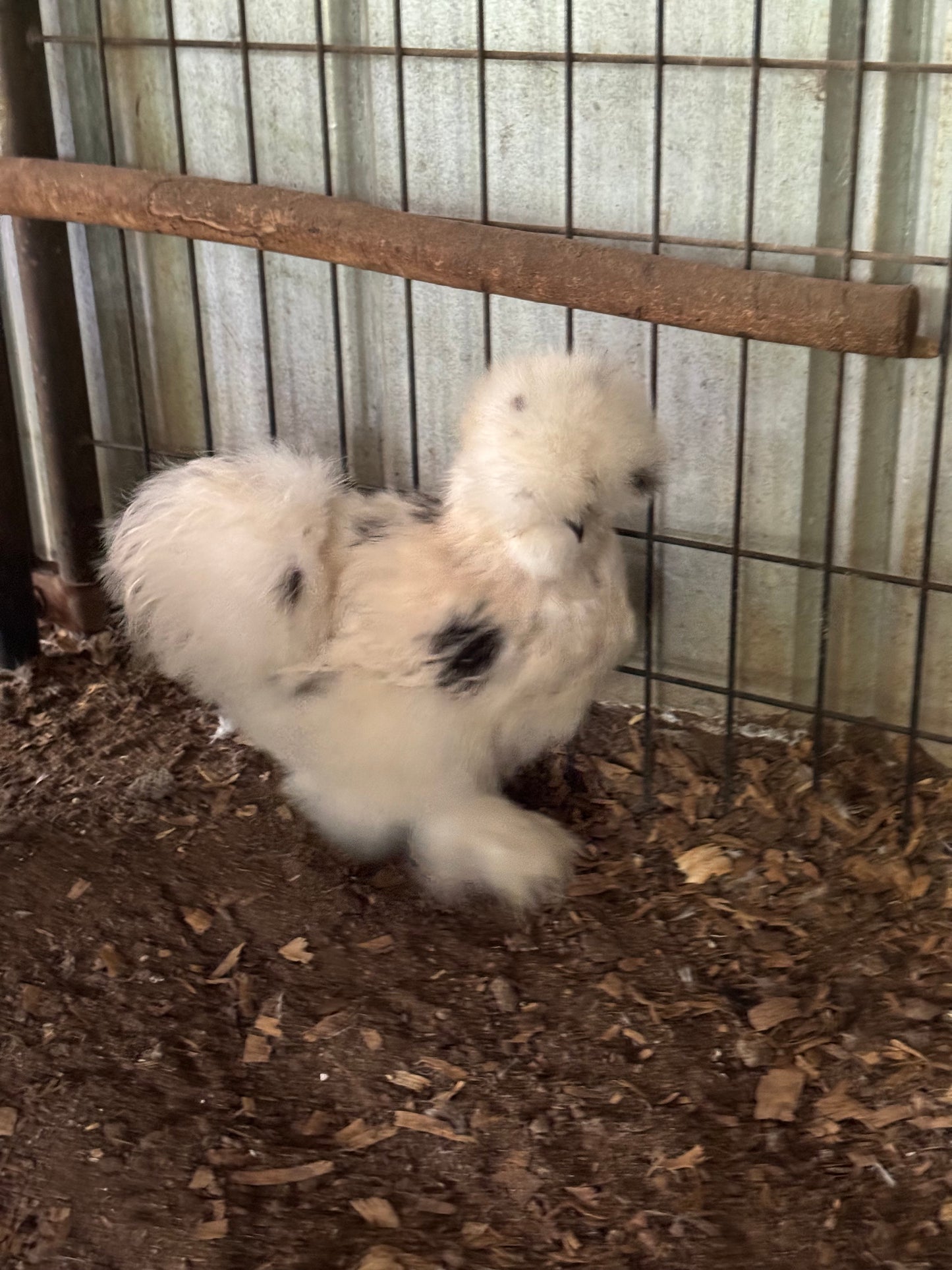
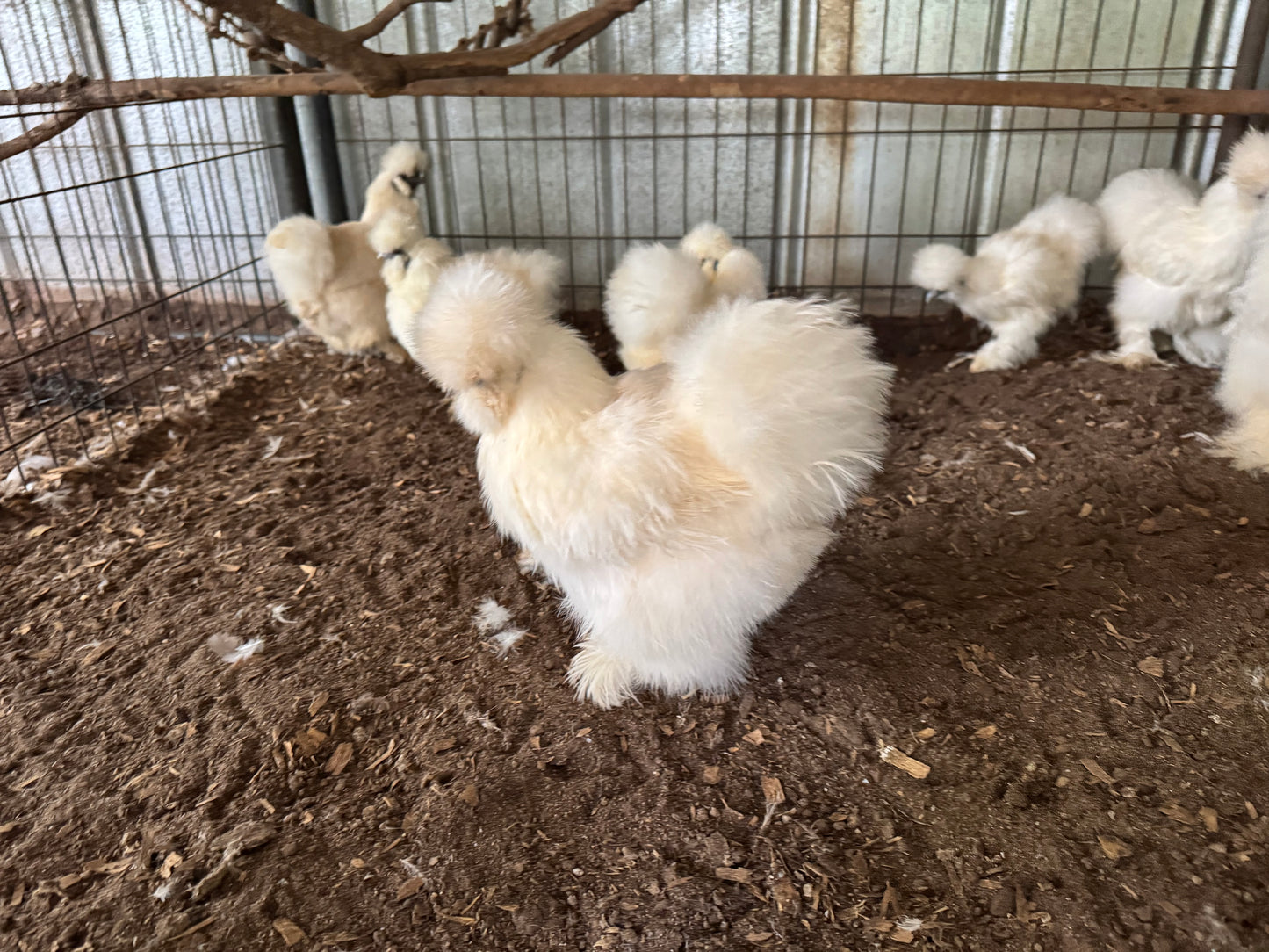
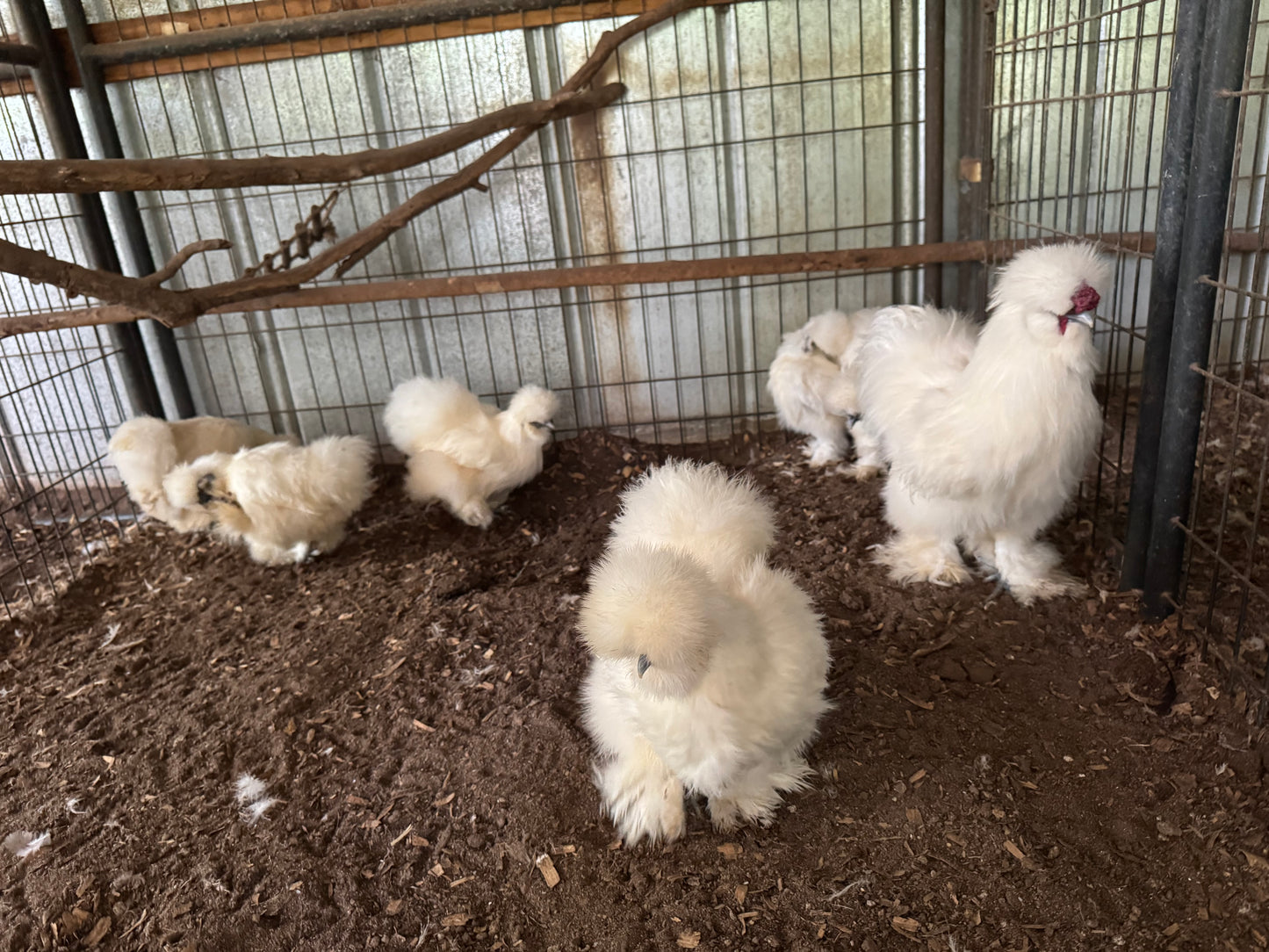
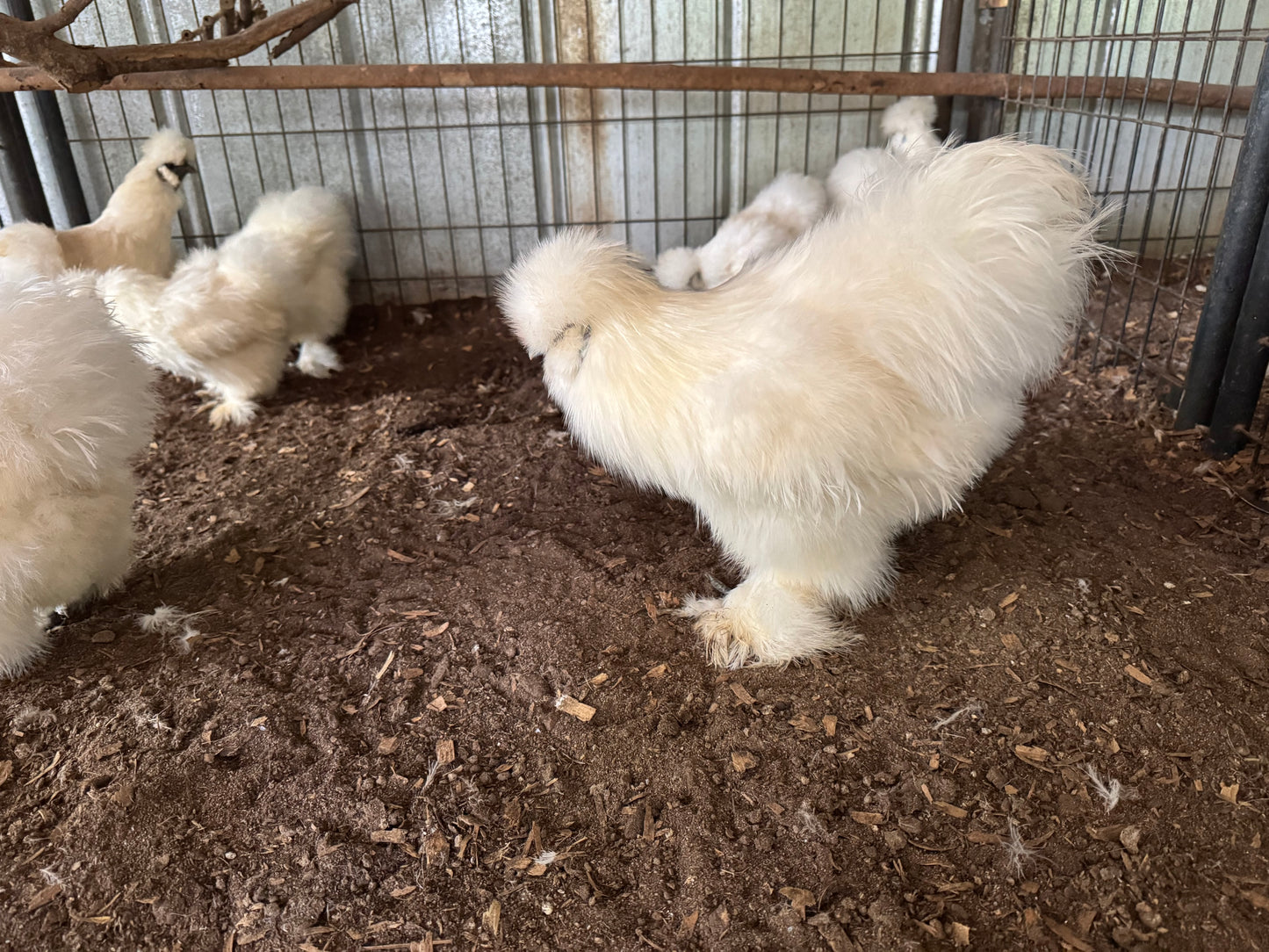
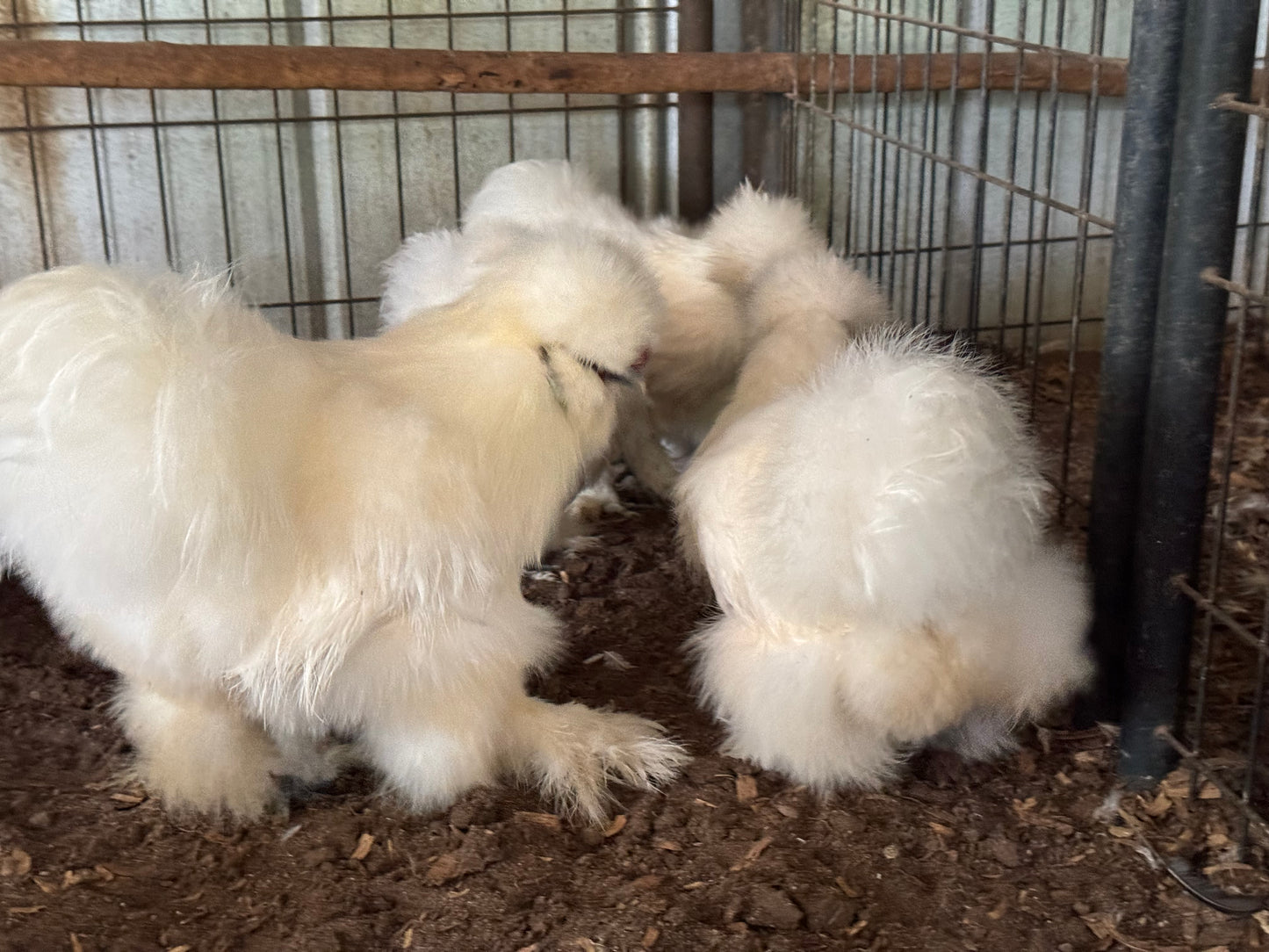
Akers Farm
Ermine Ameraucana Hatching Eggs
Share
